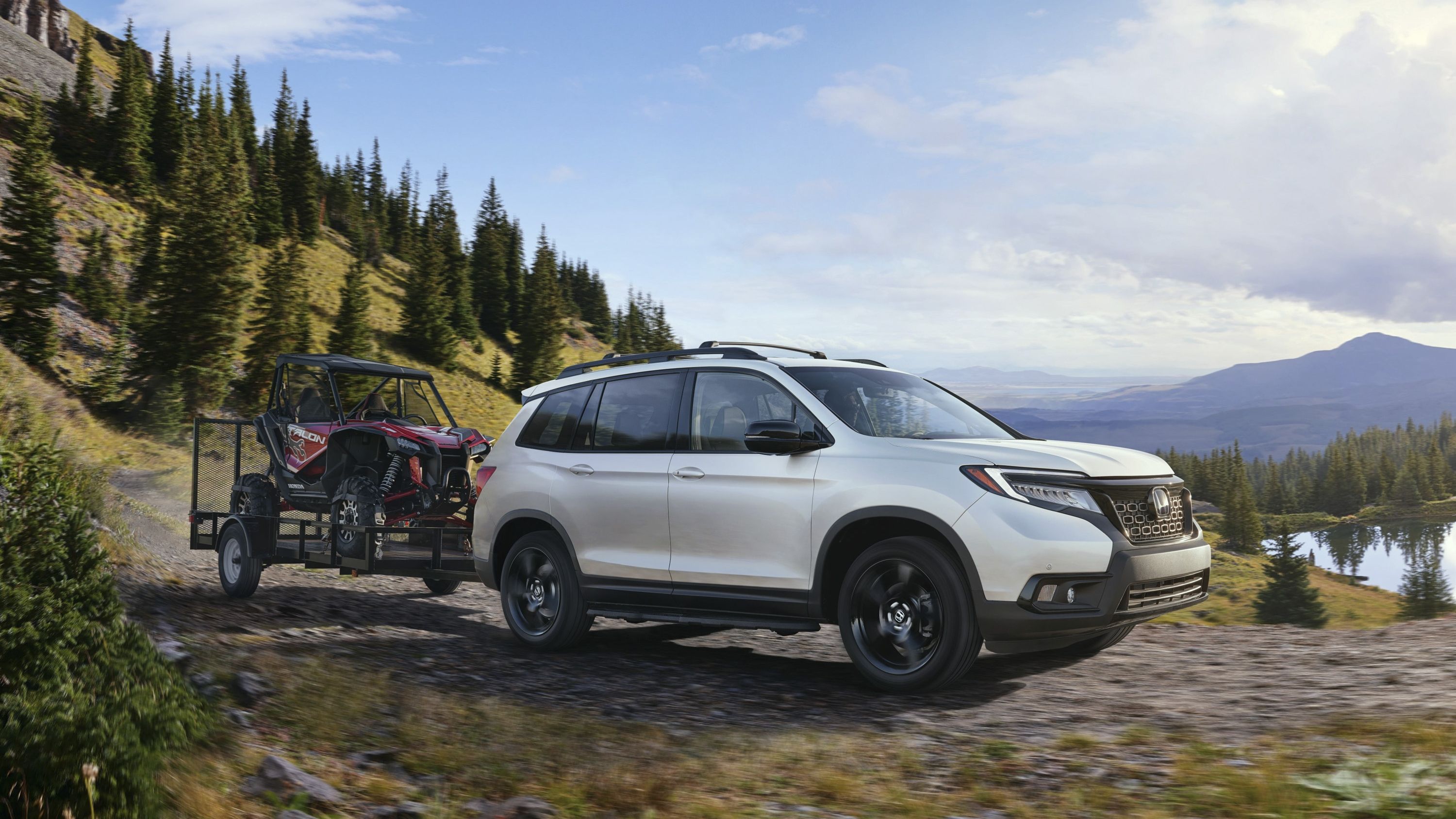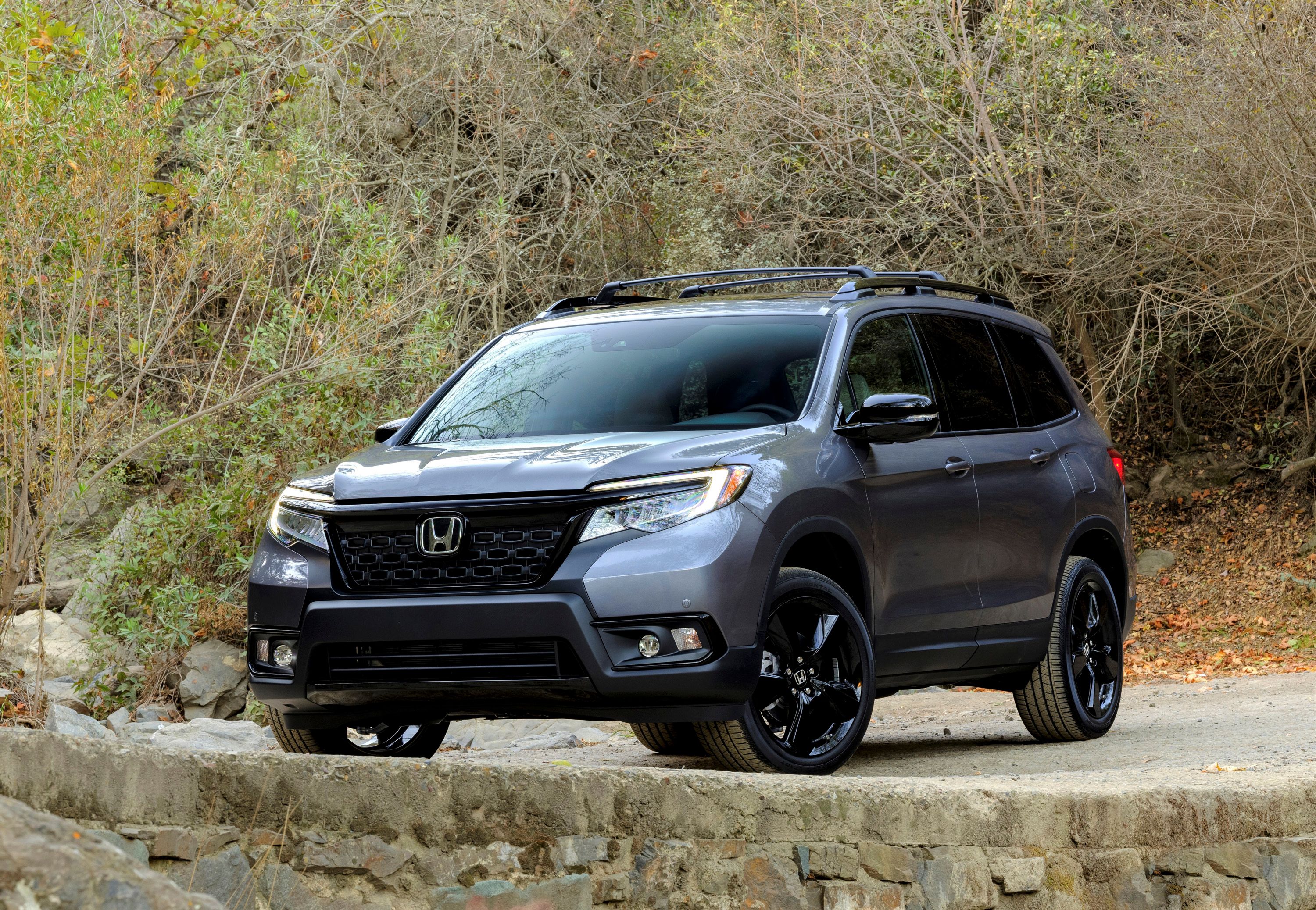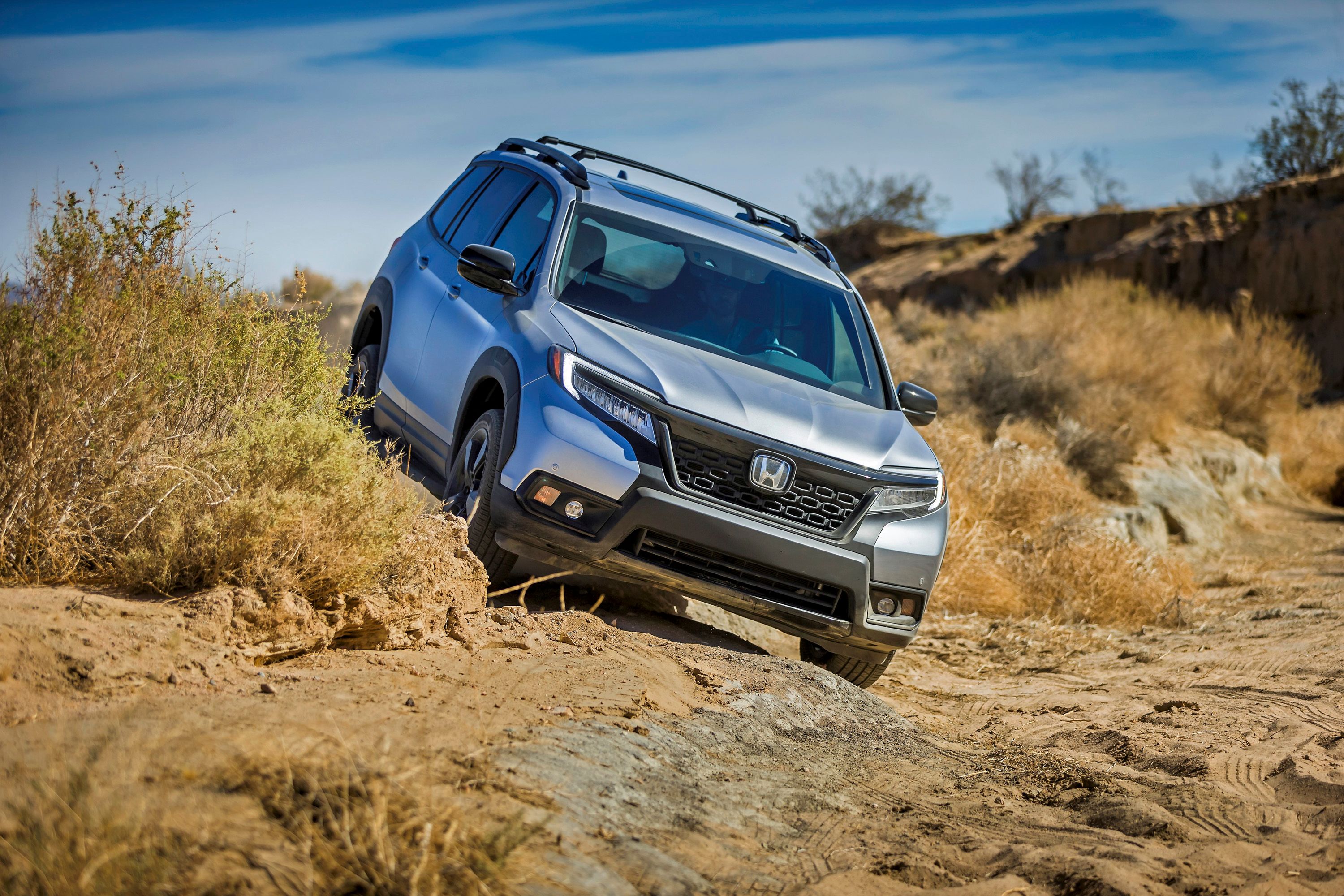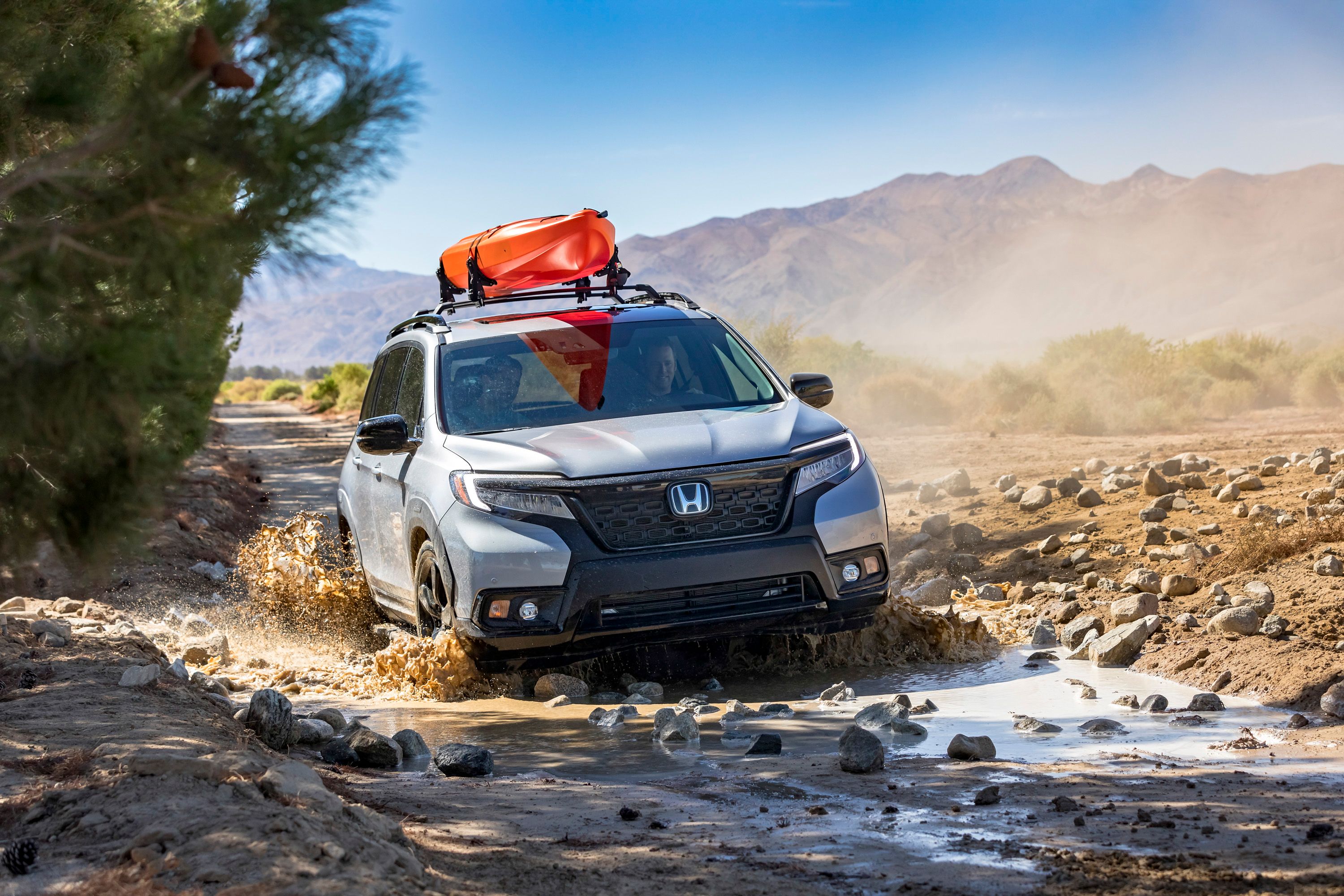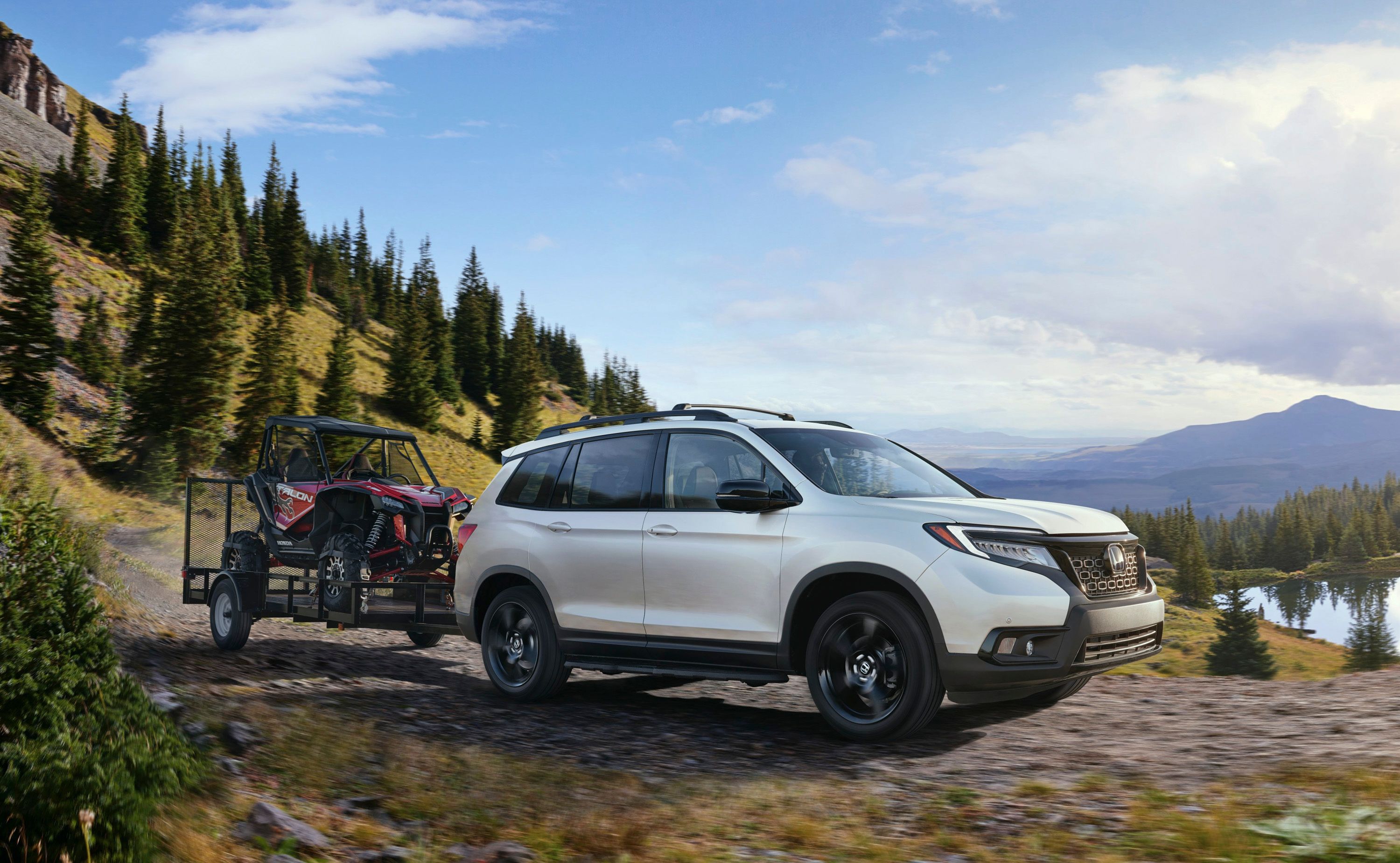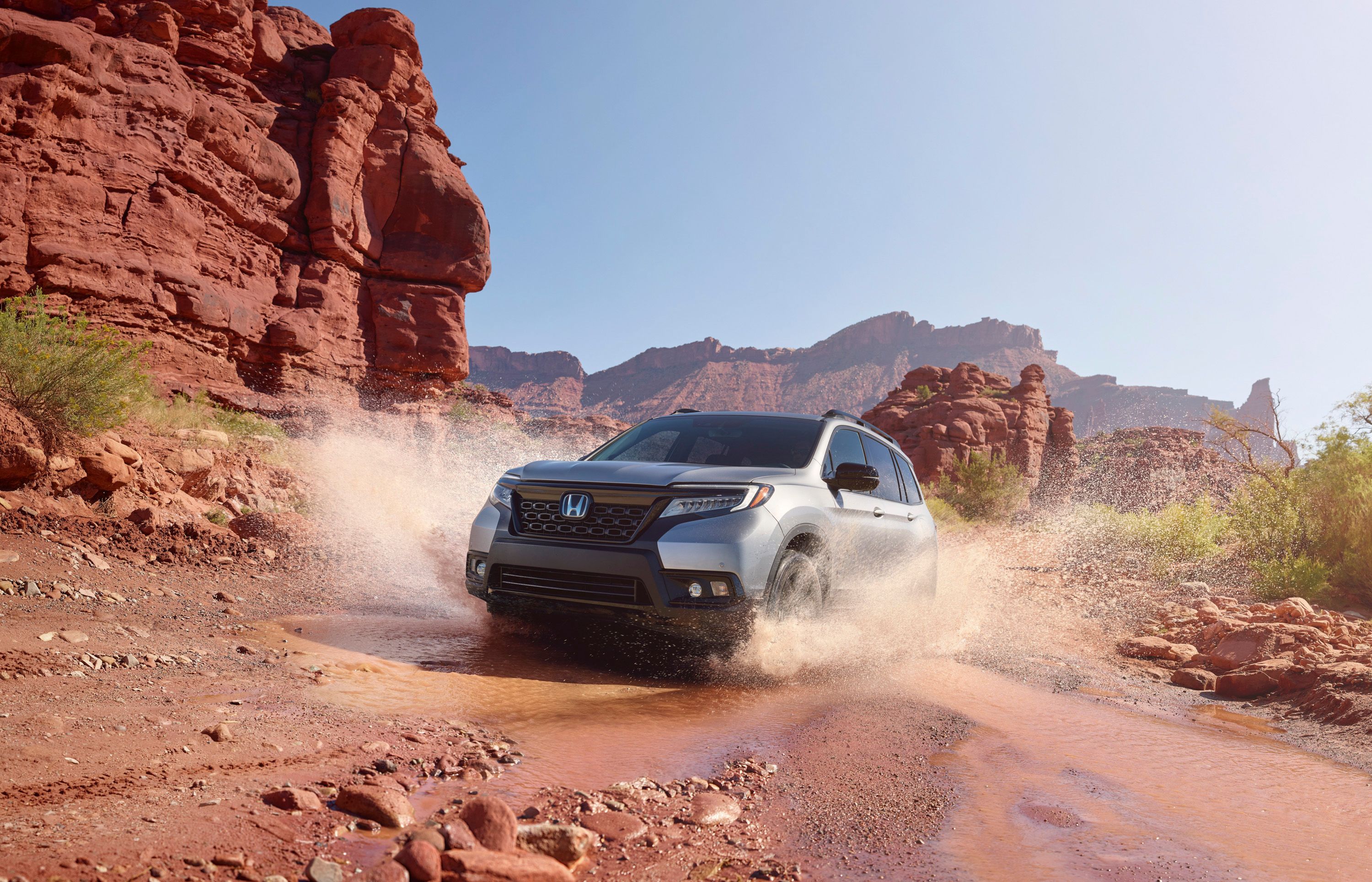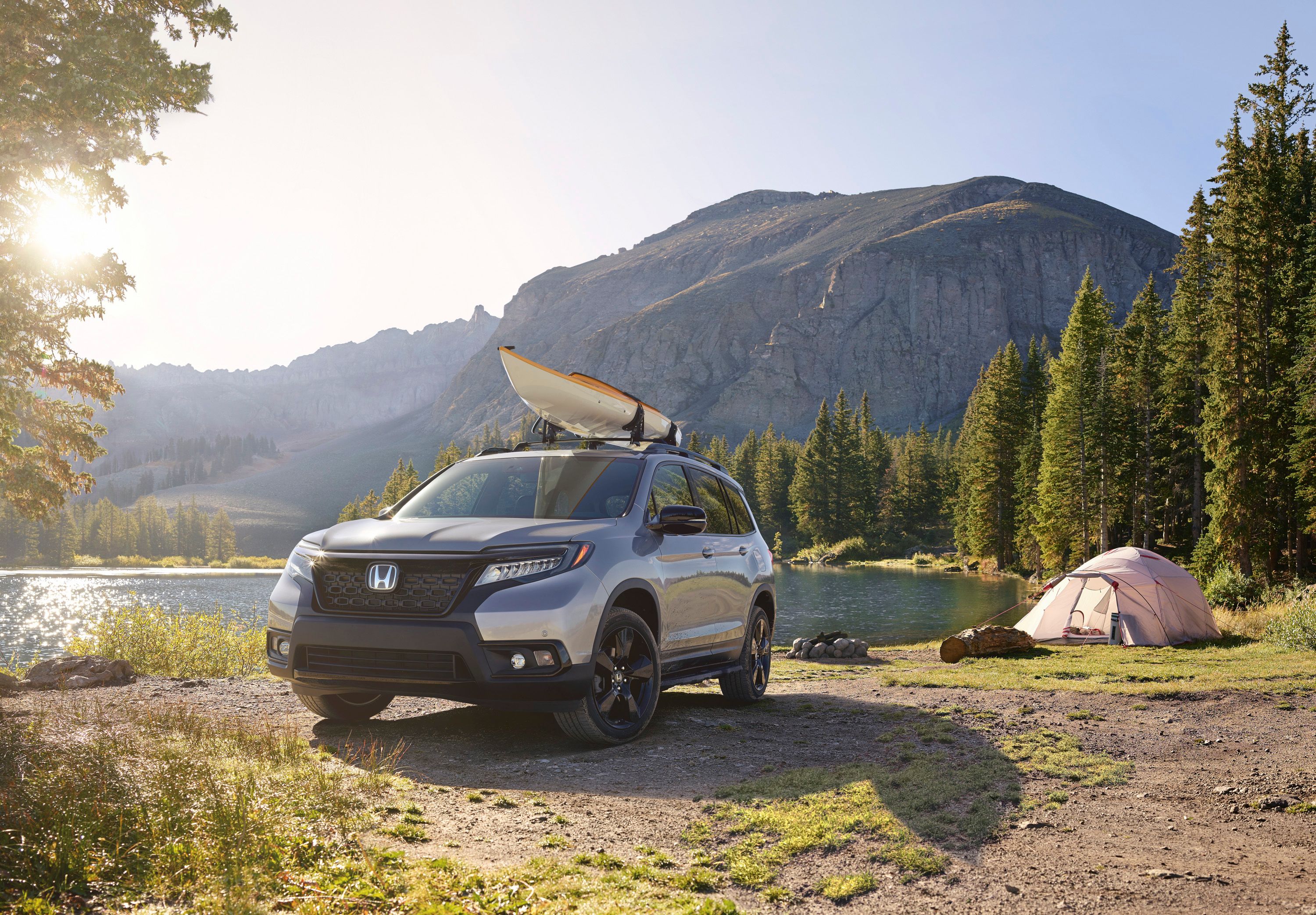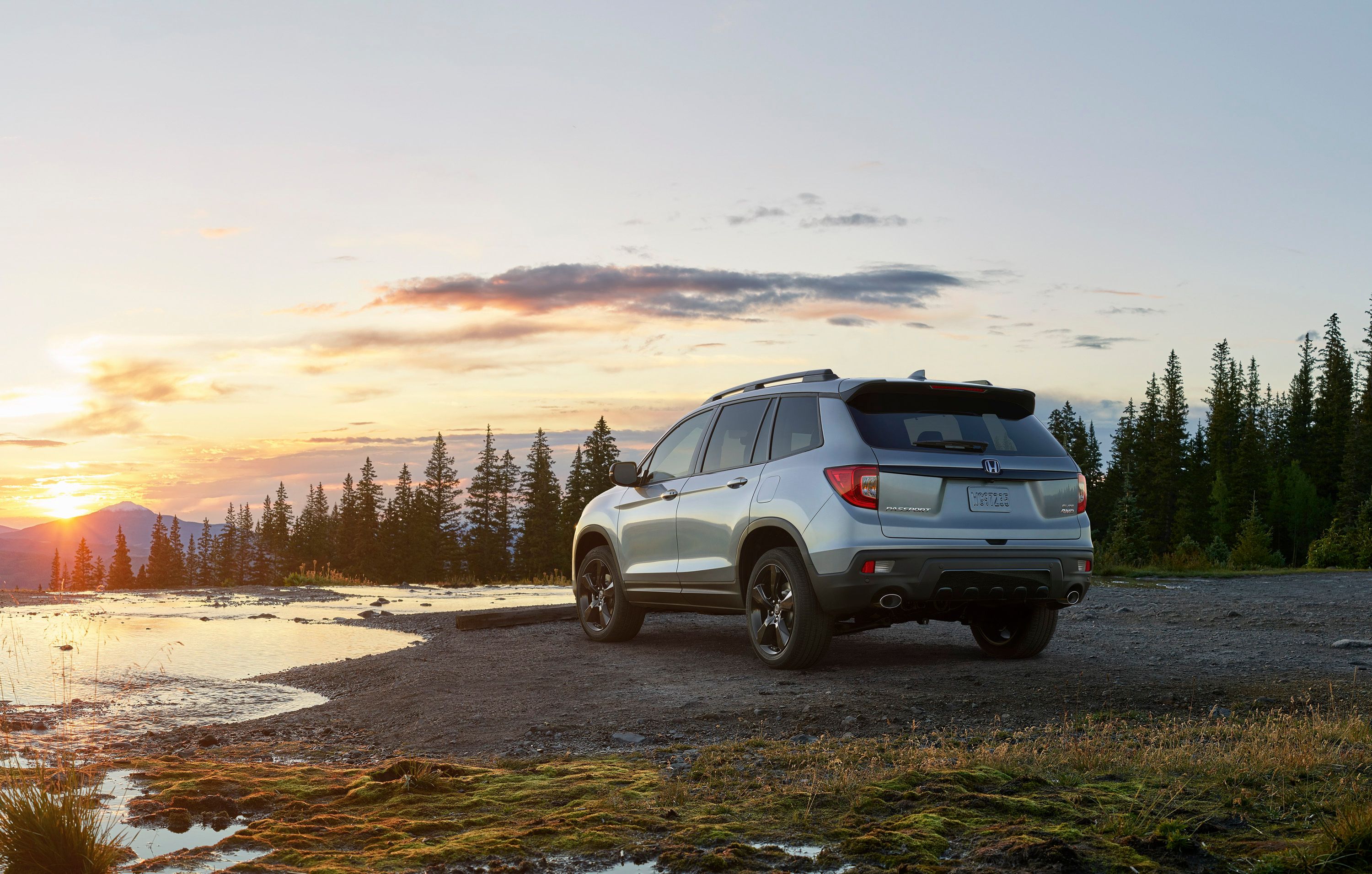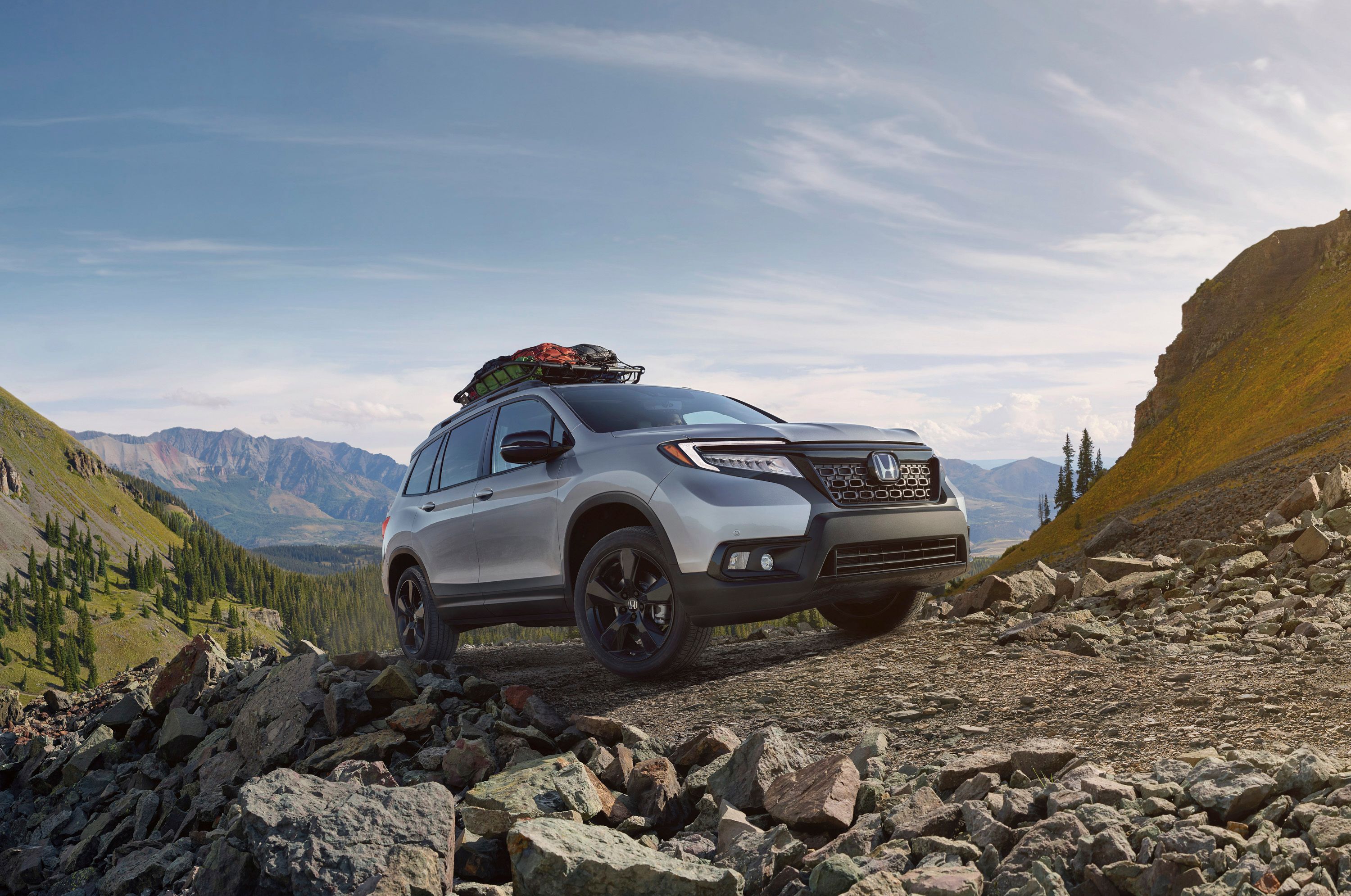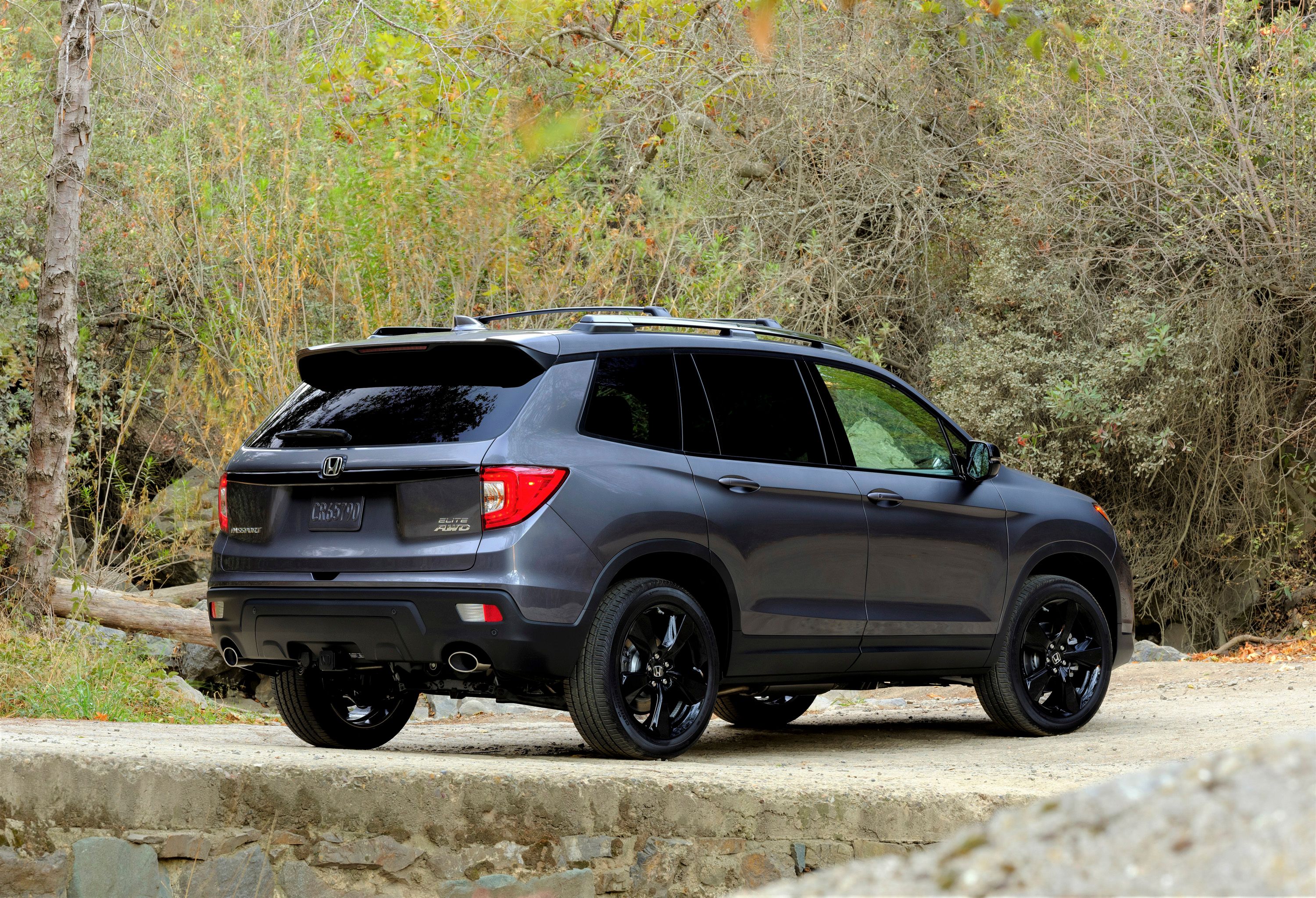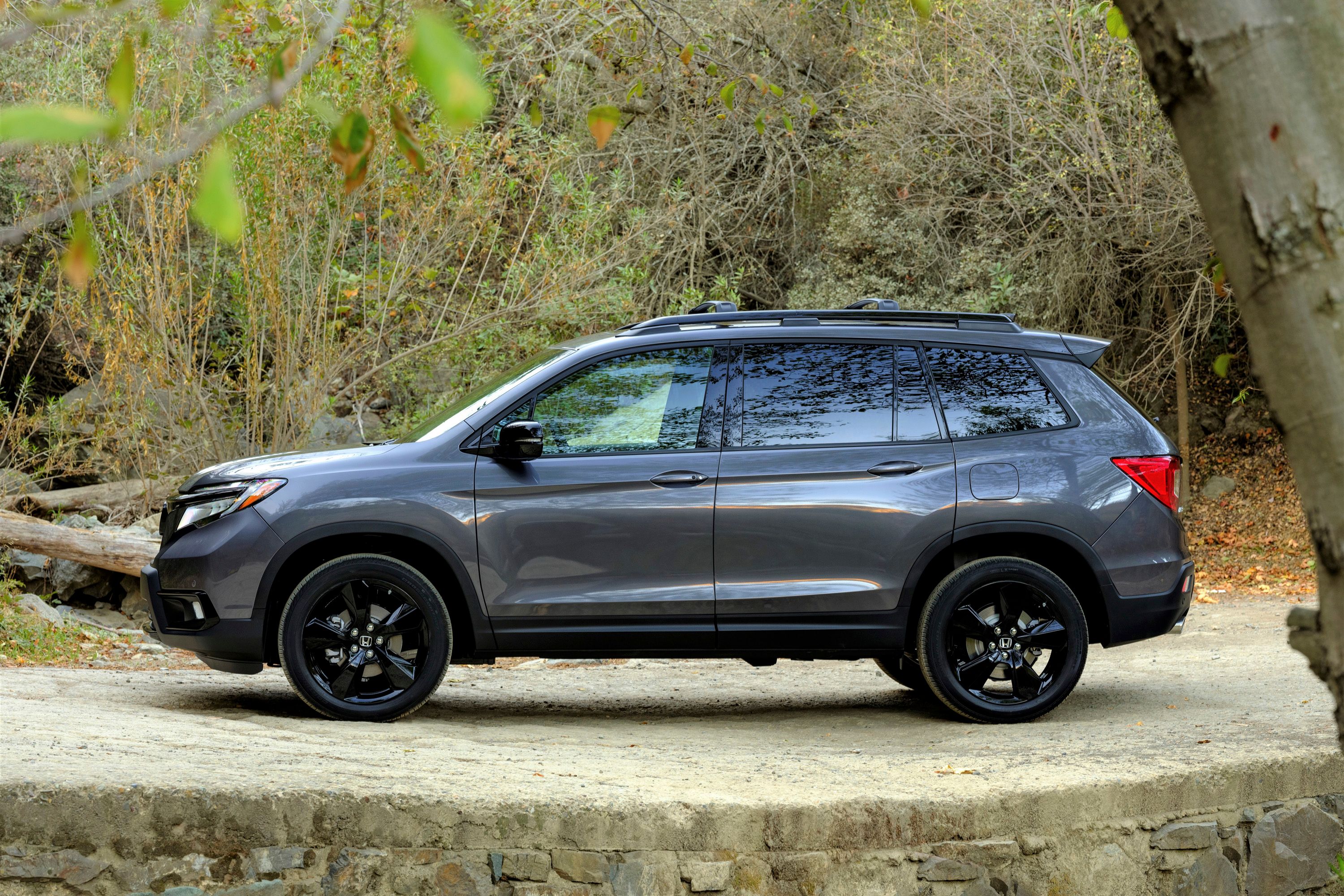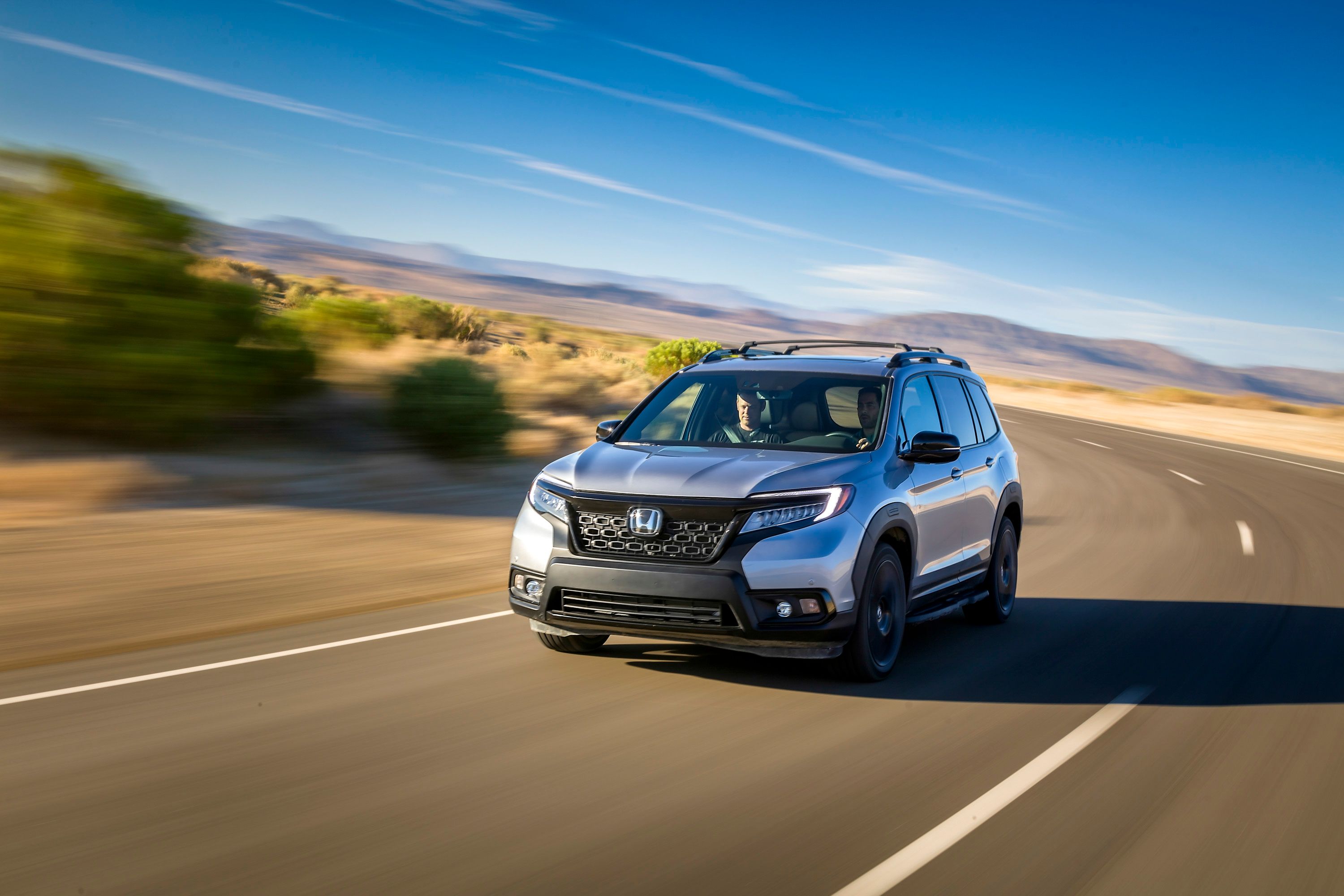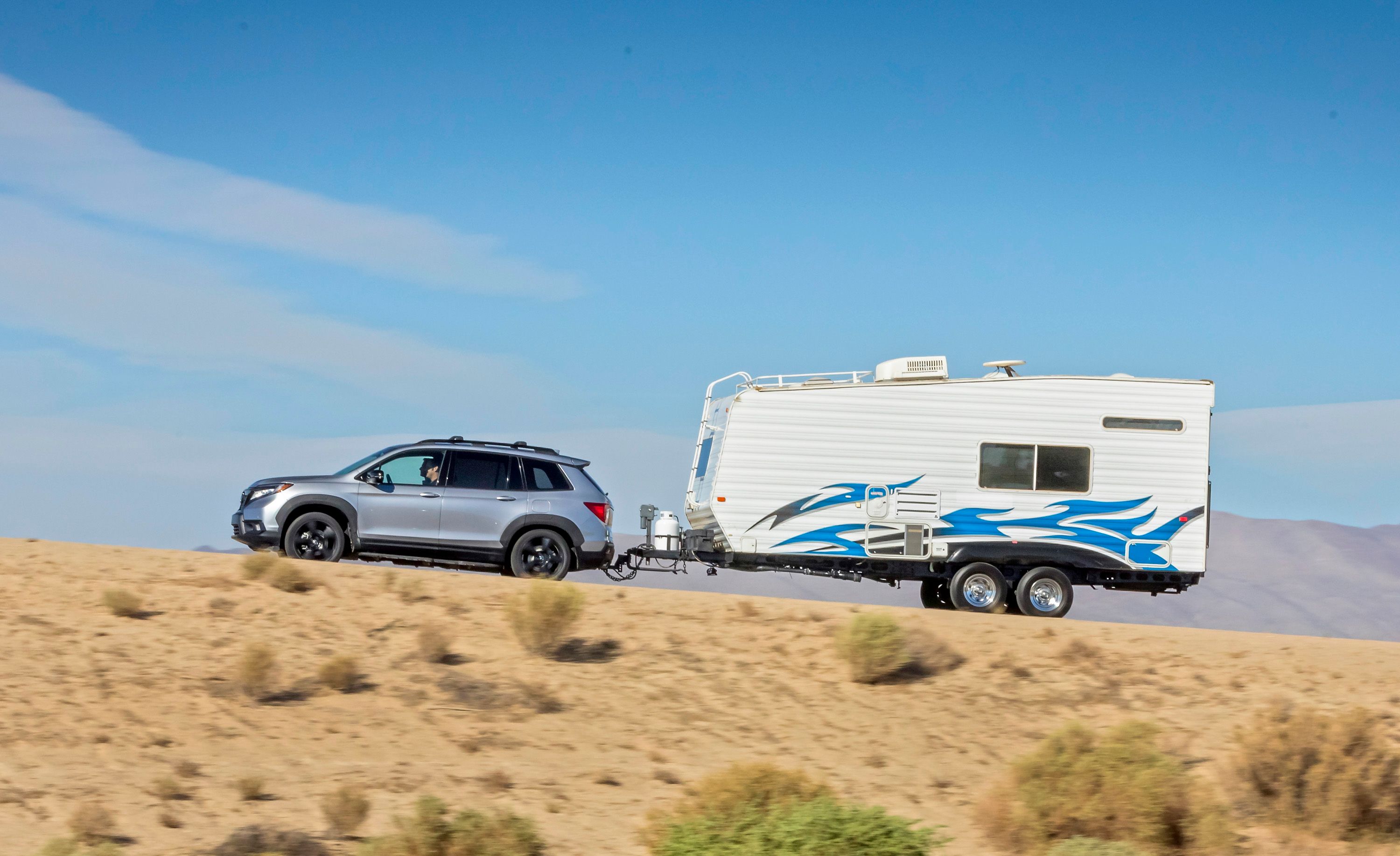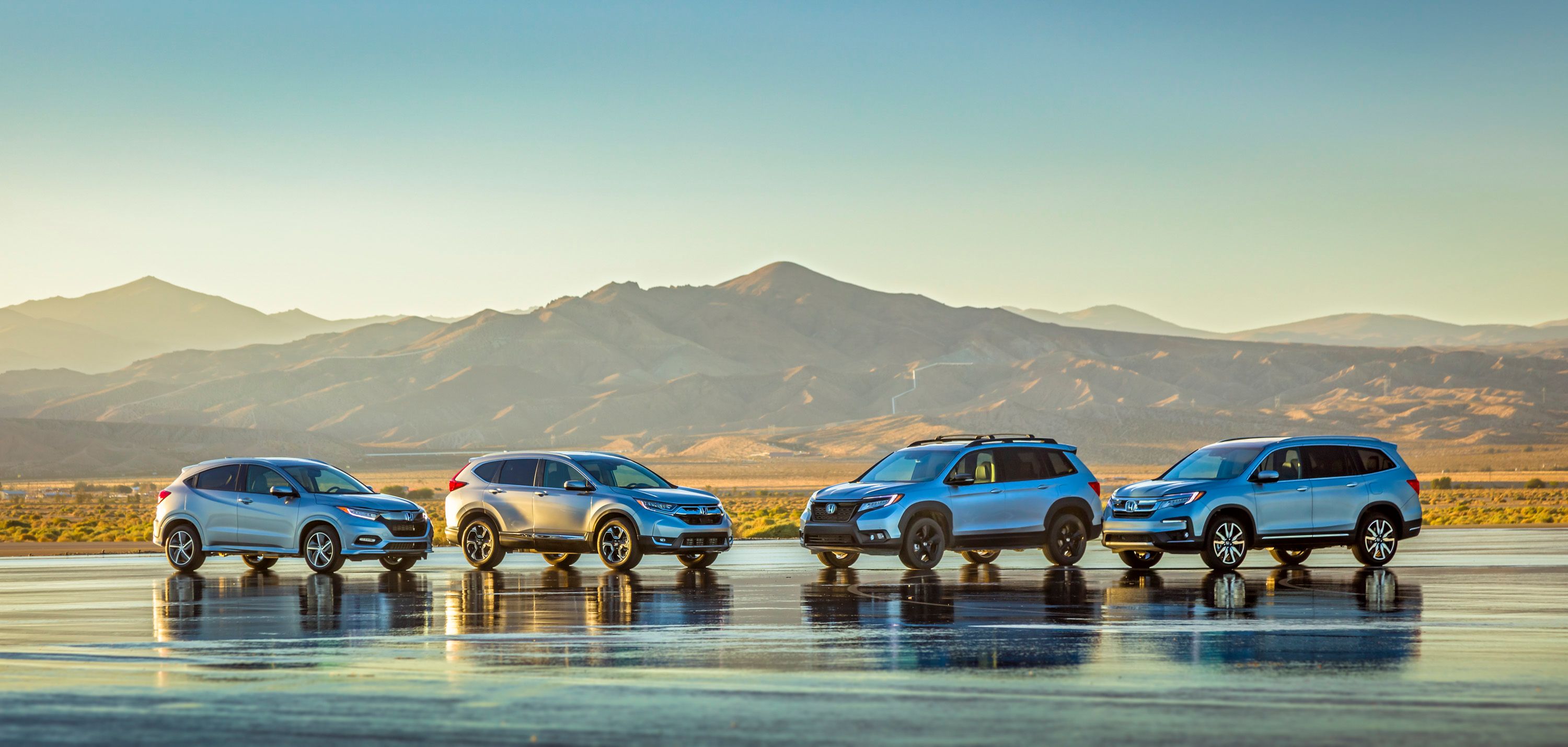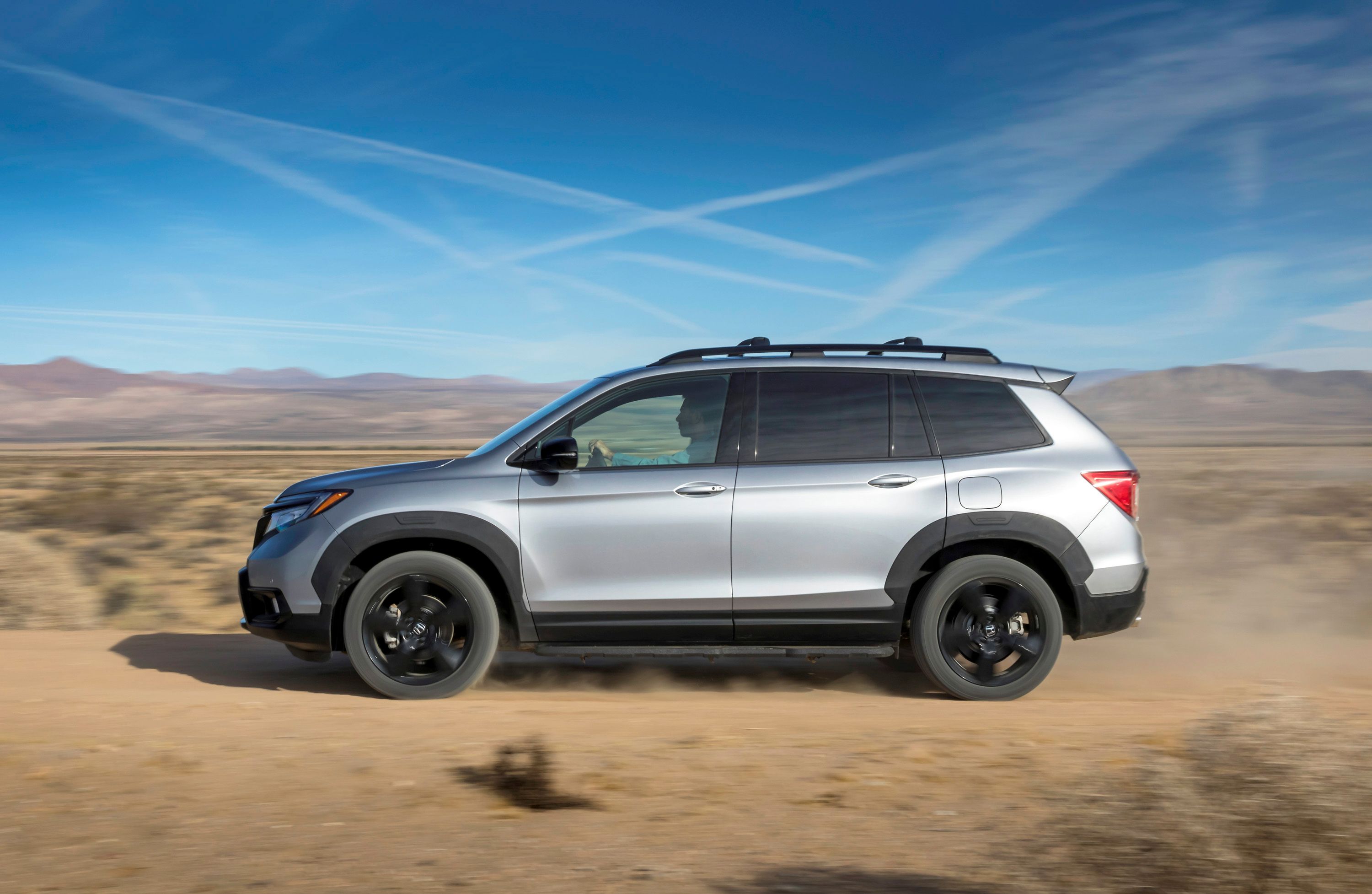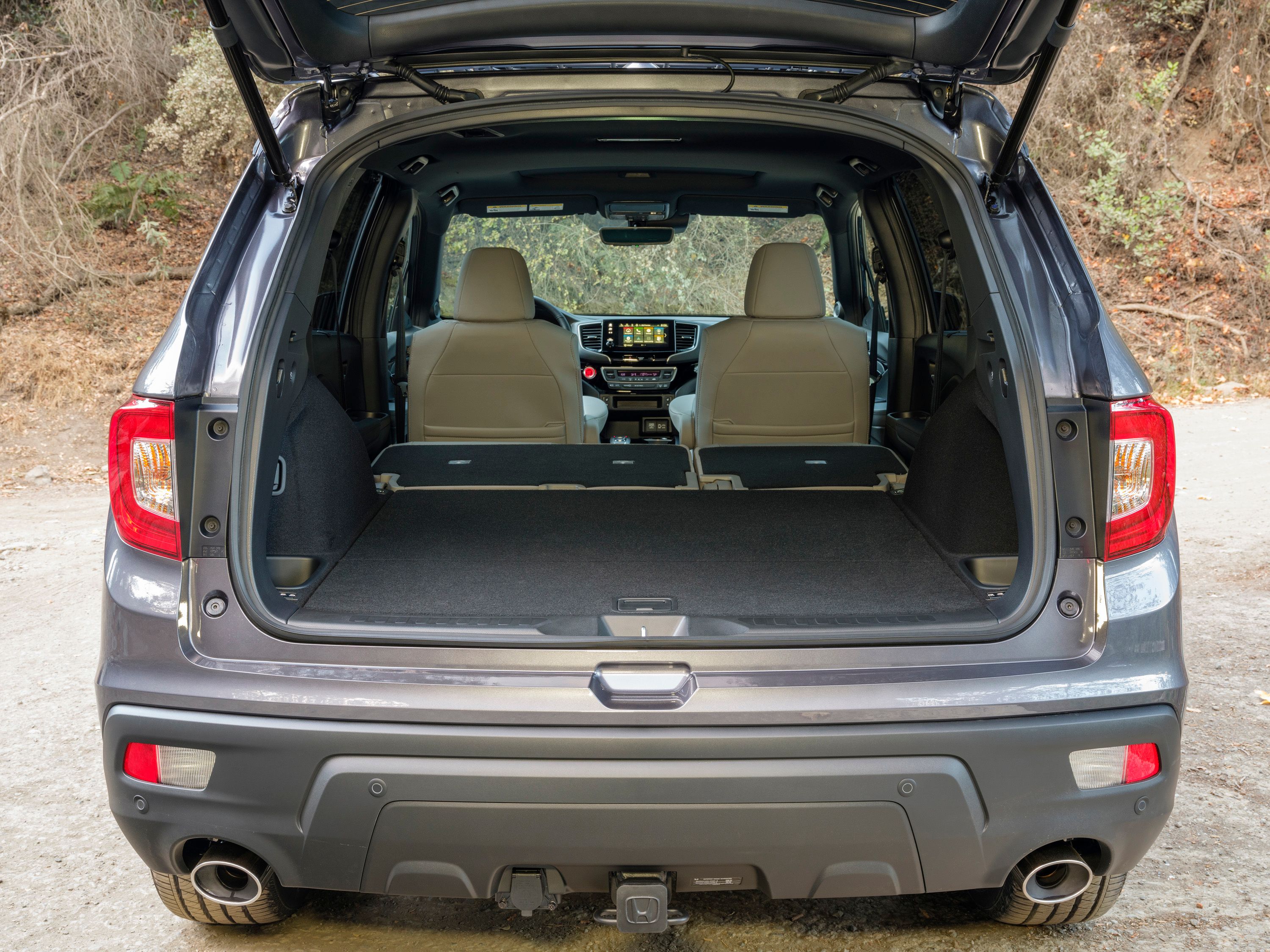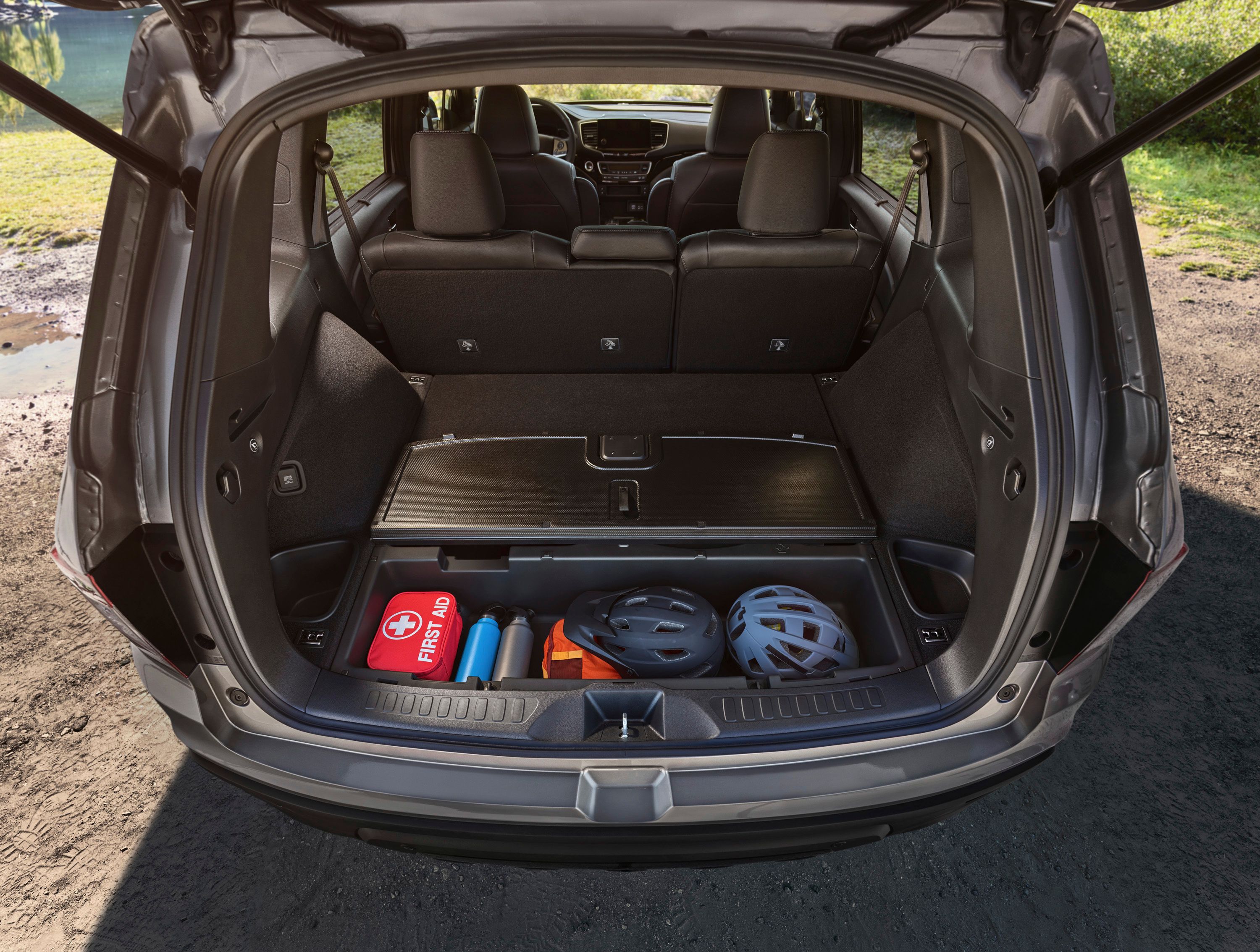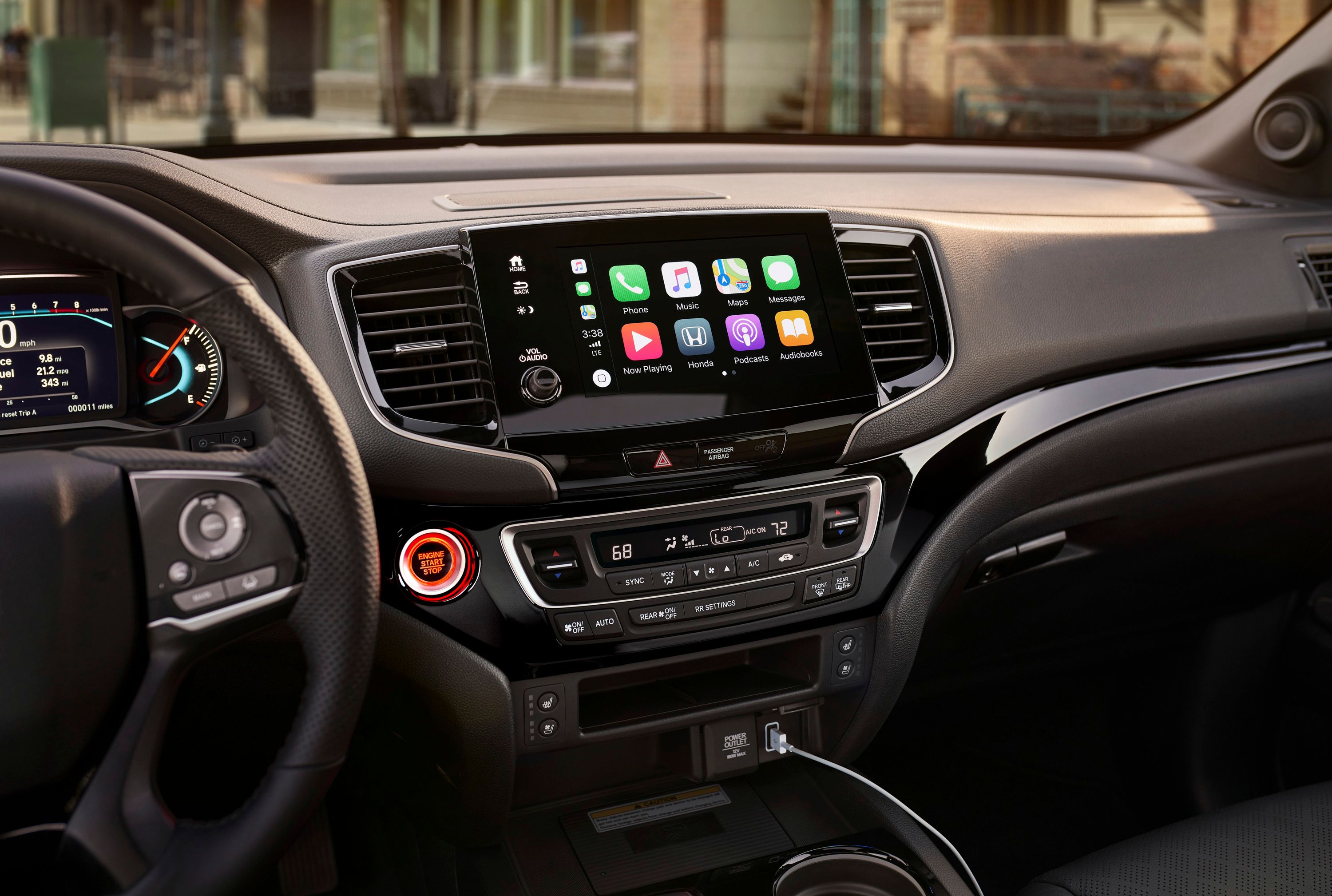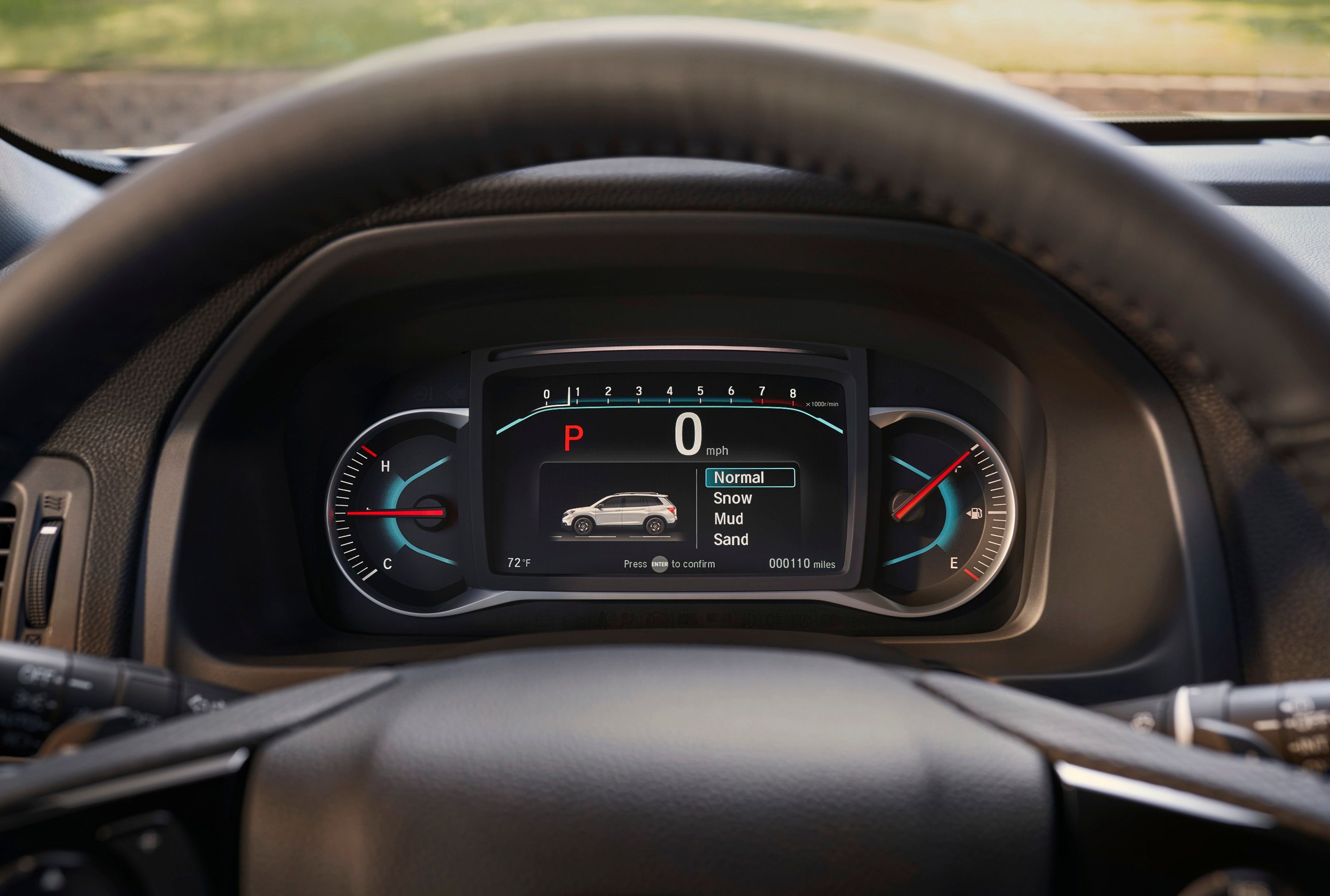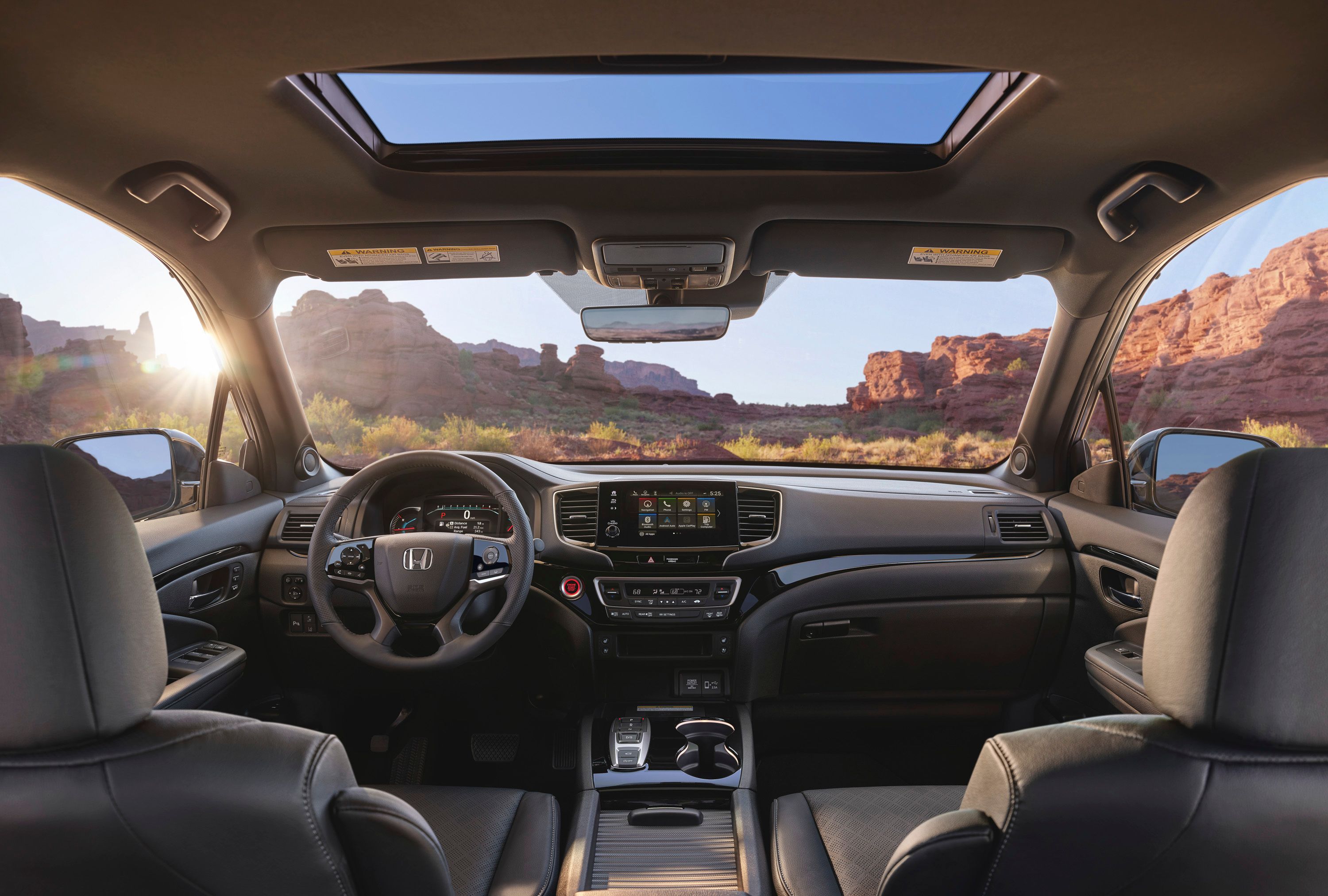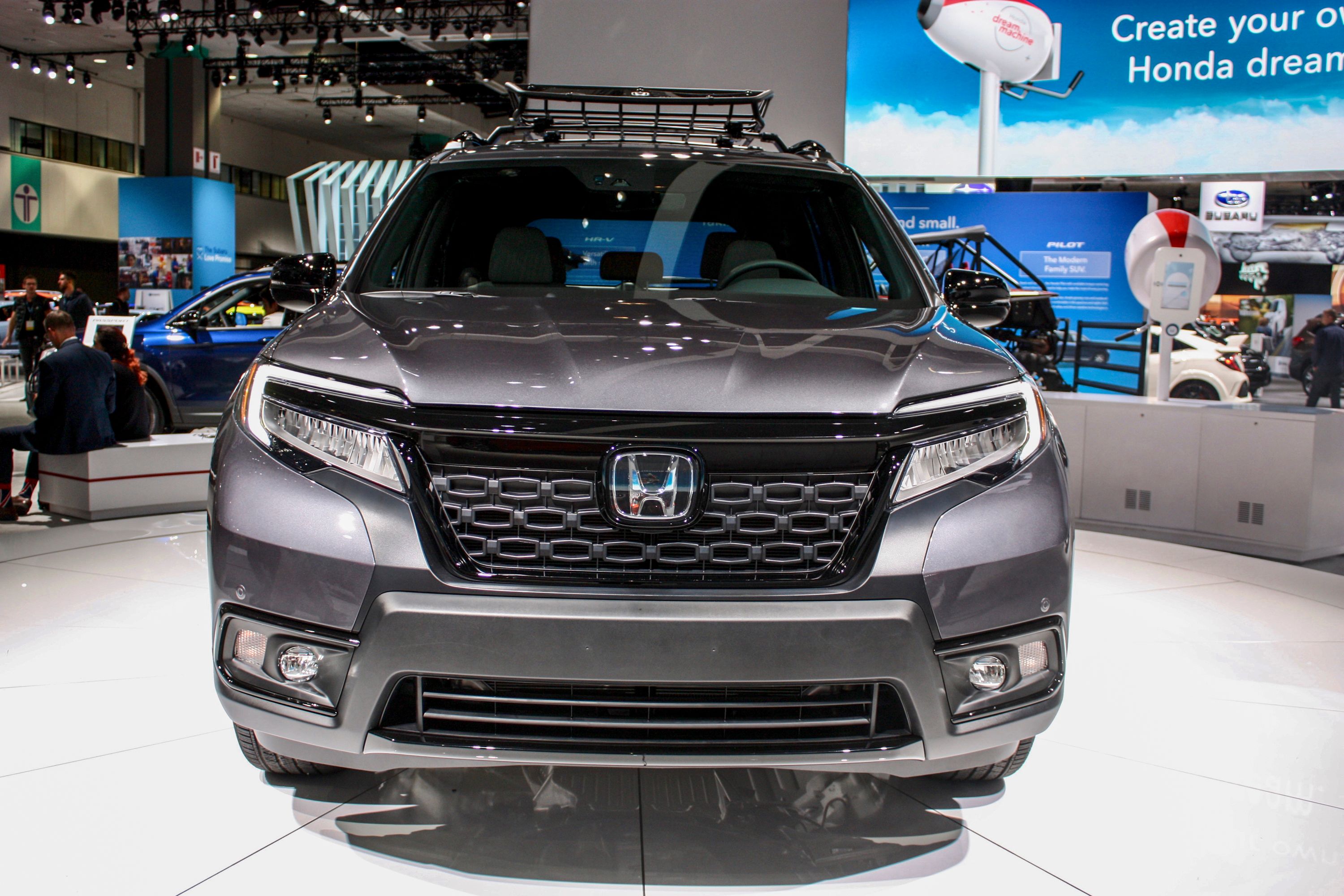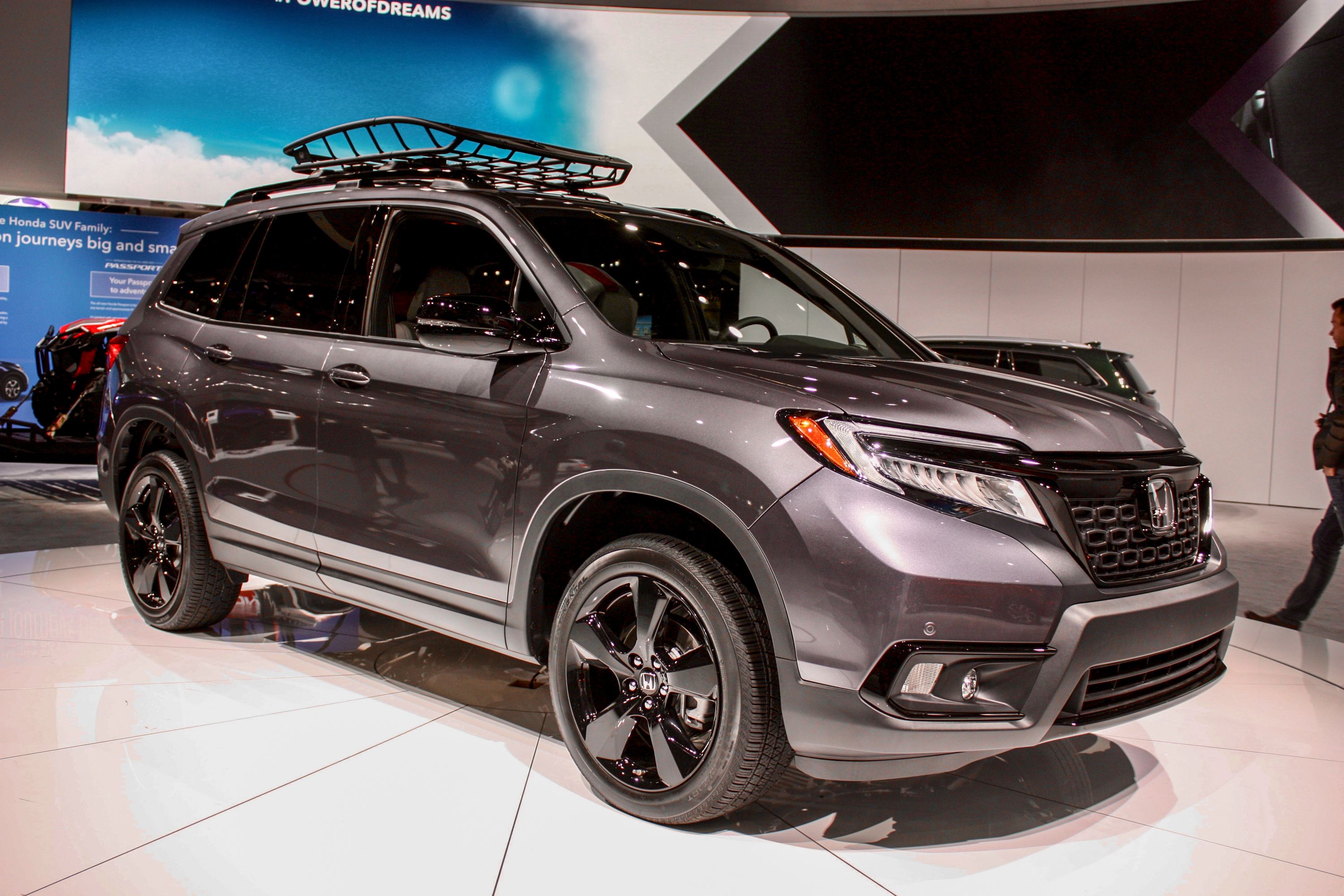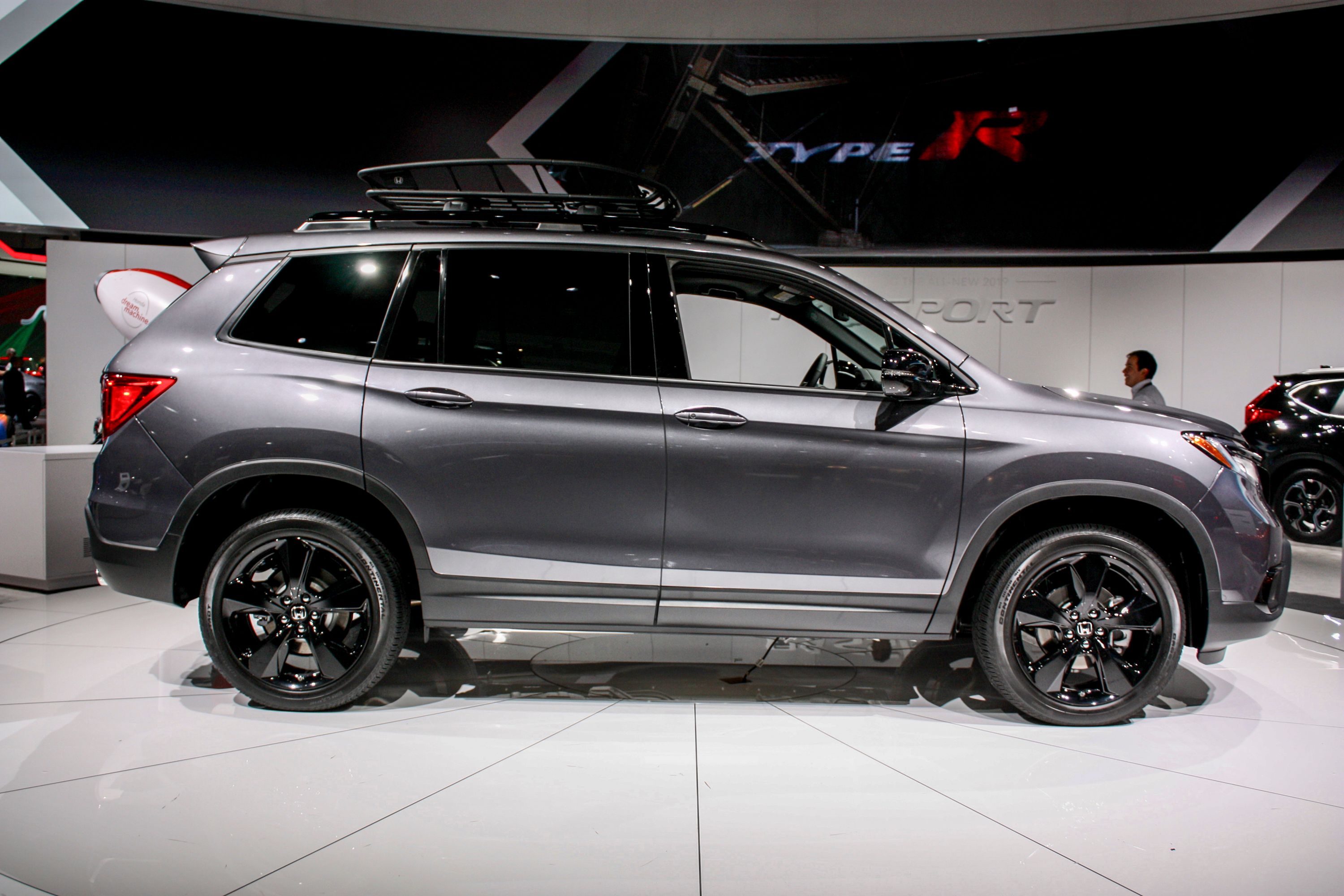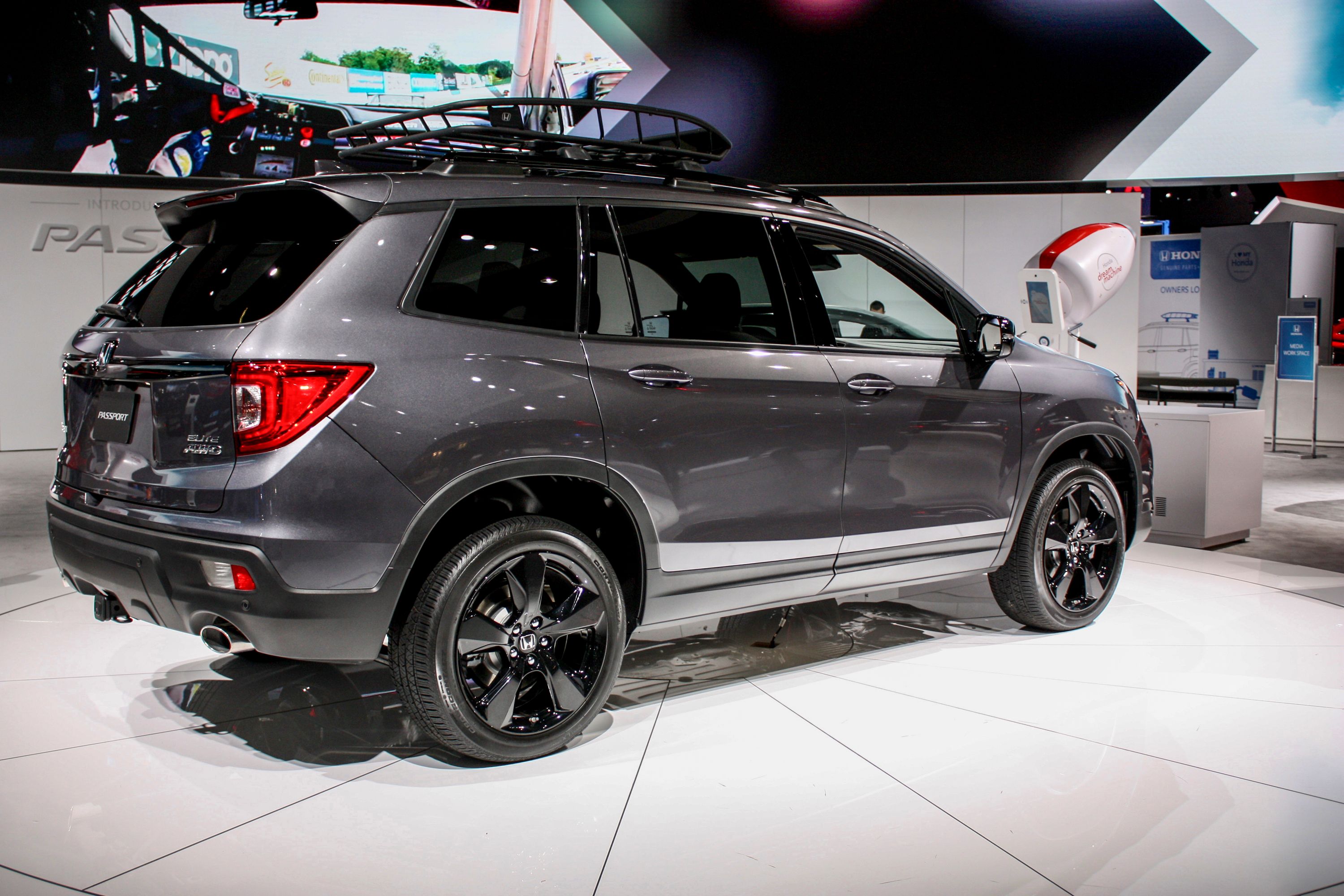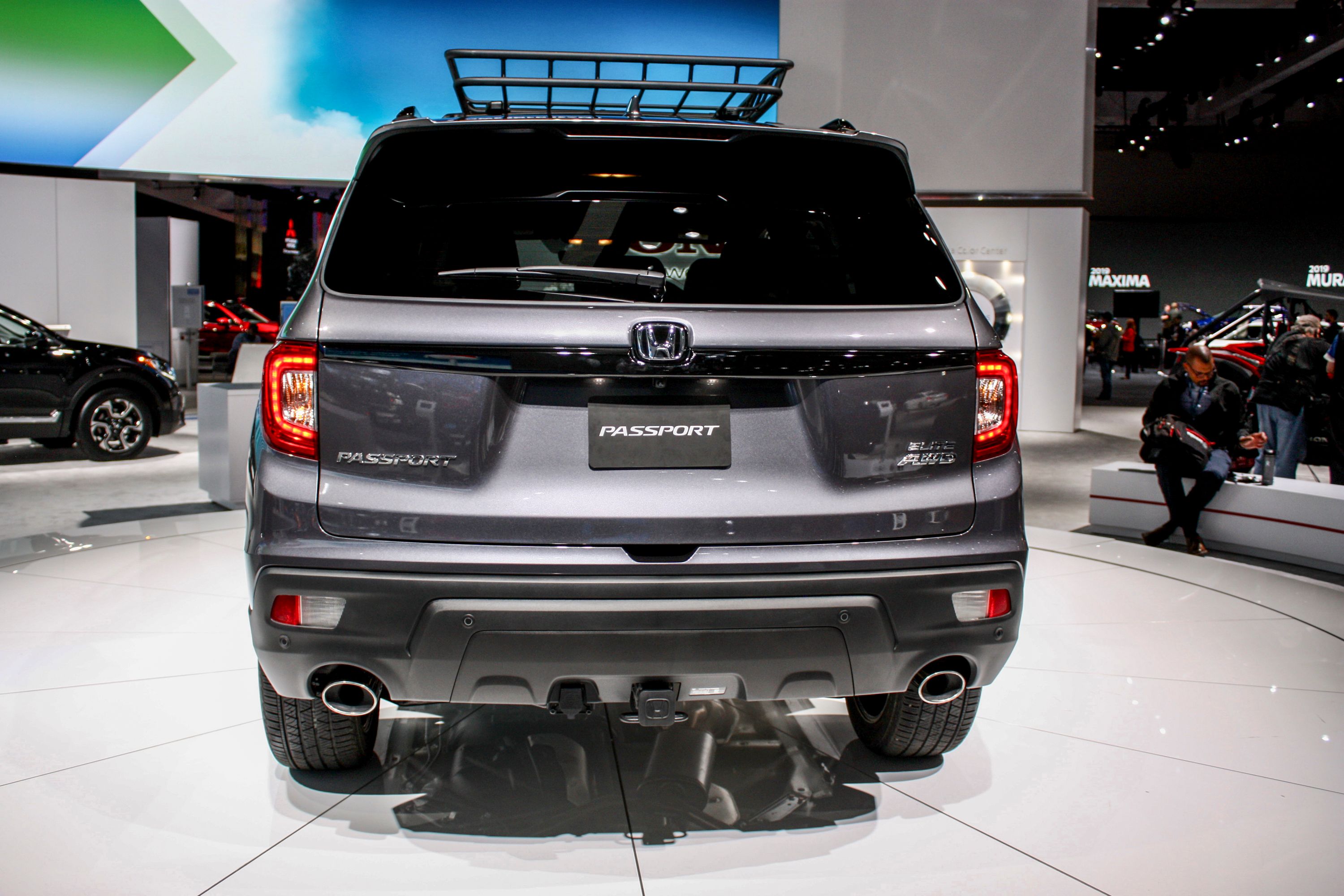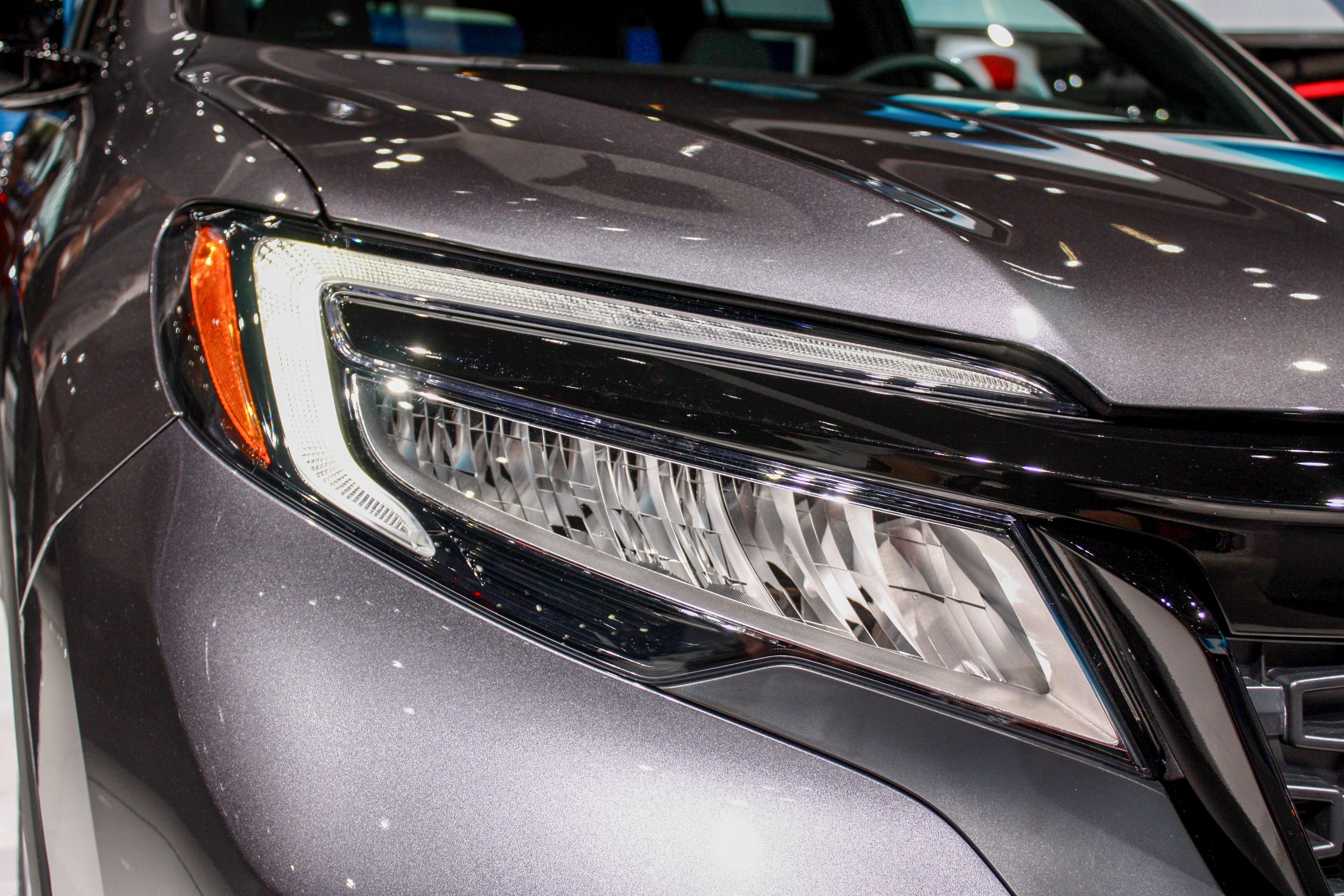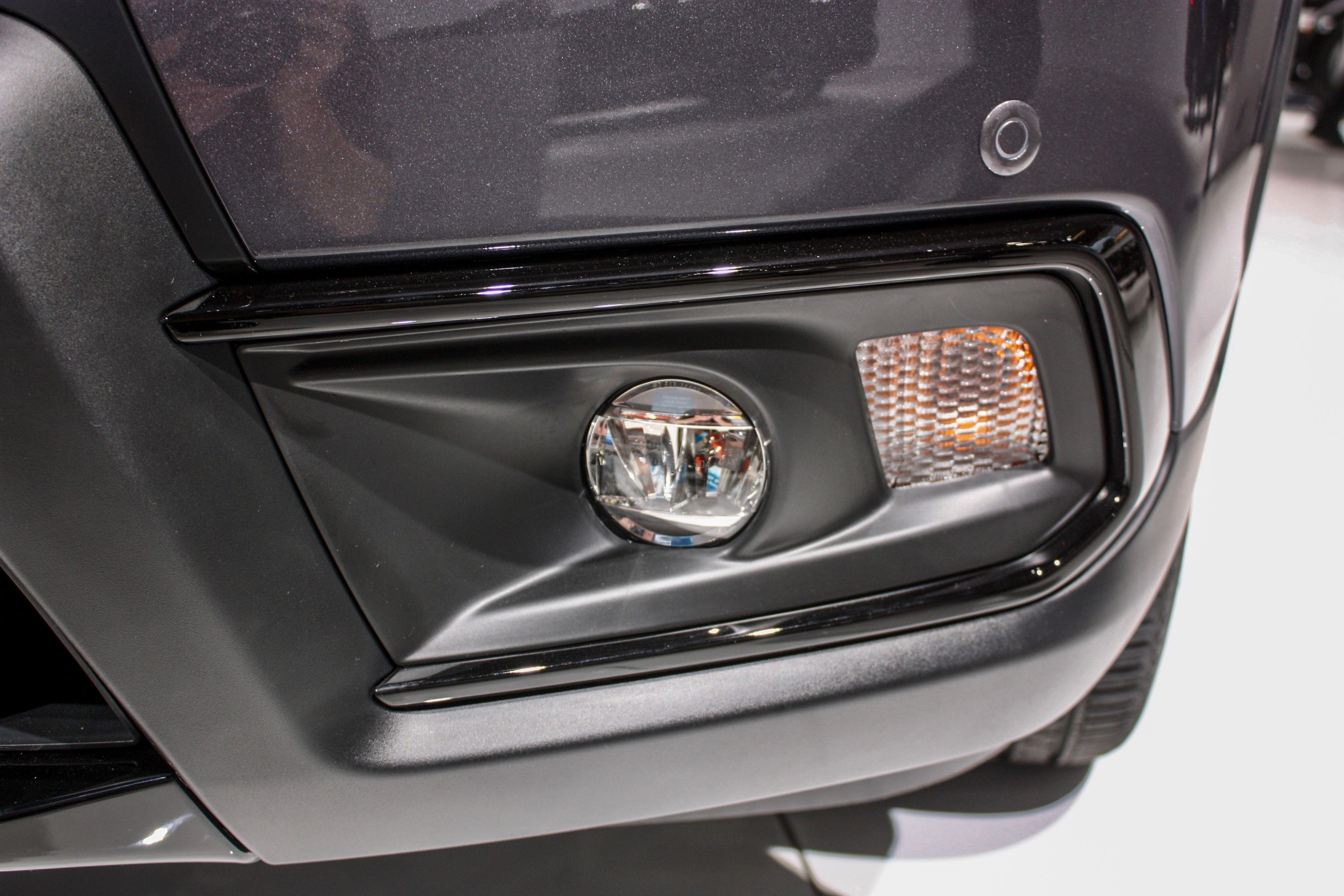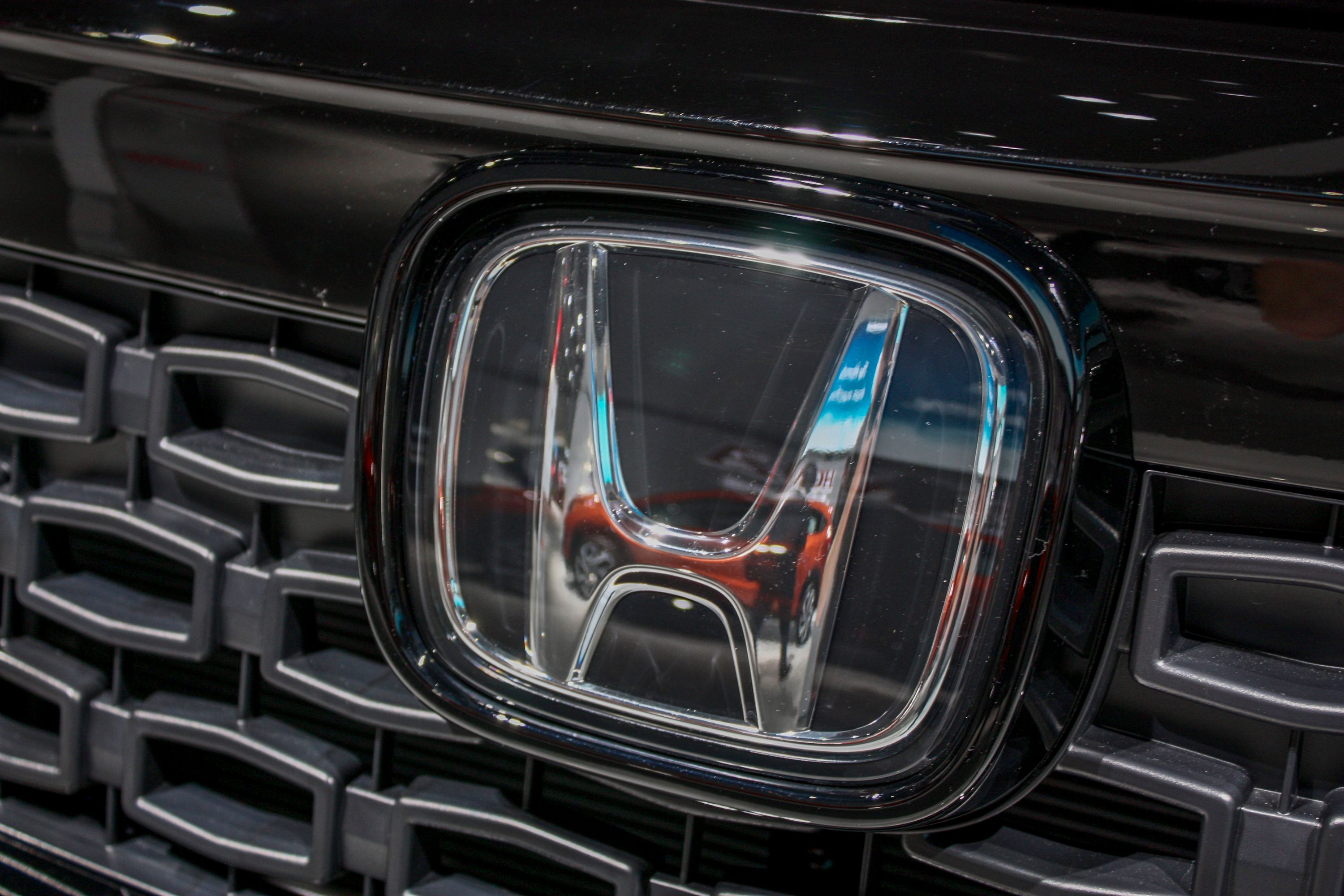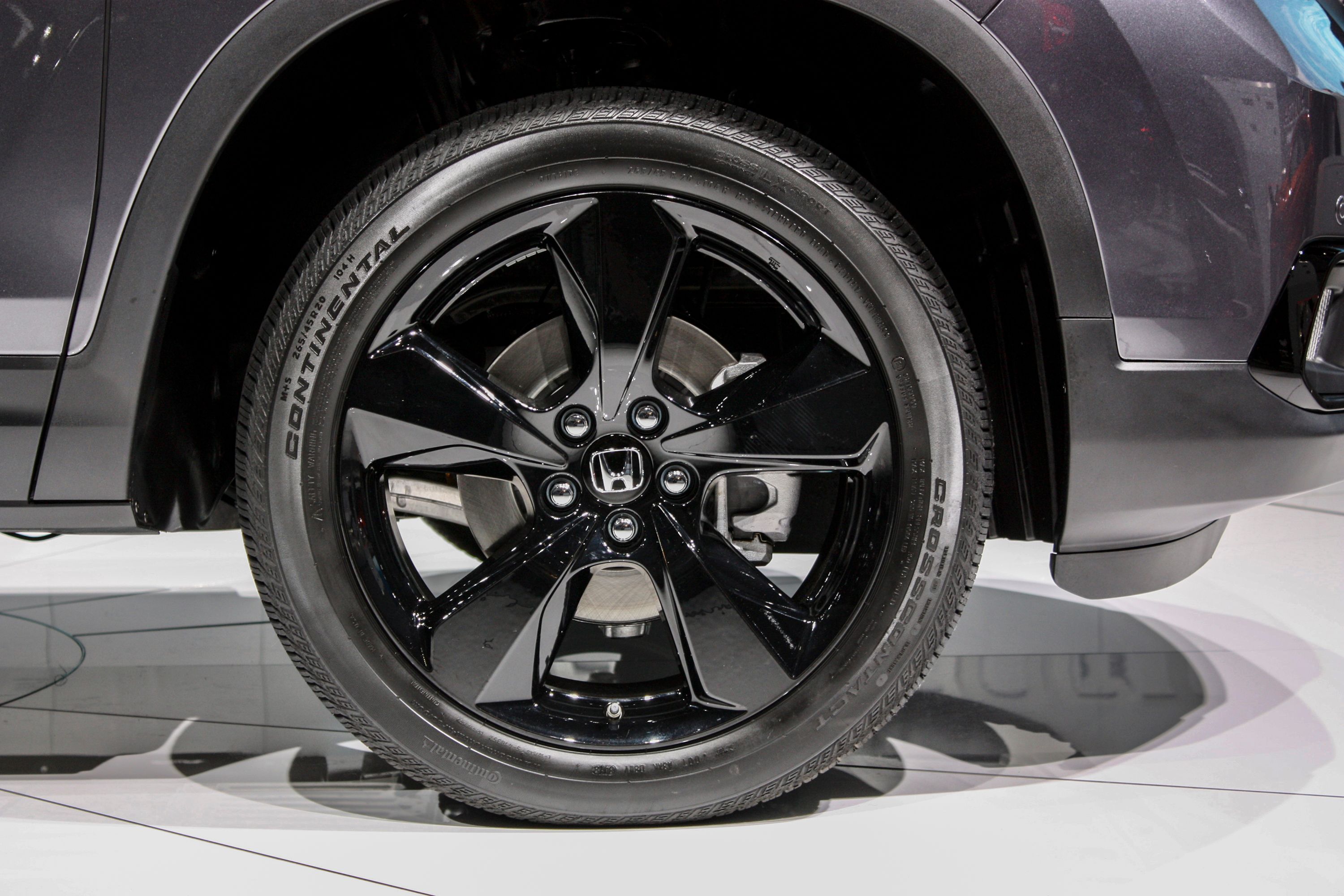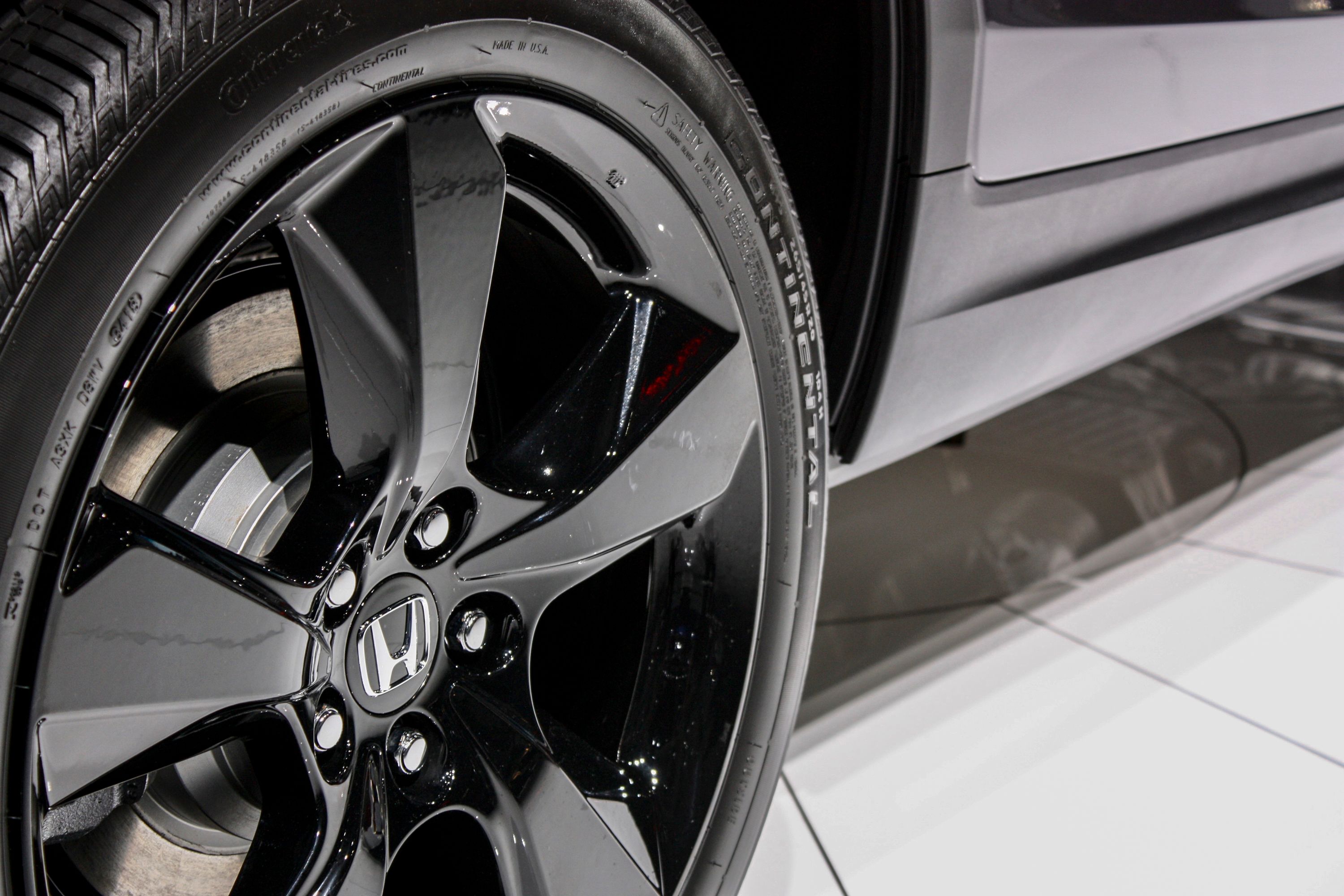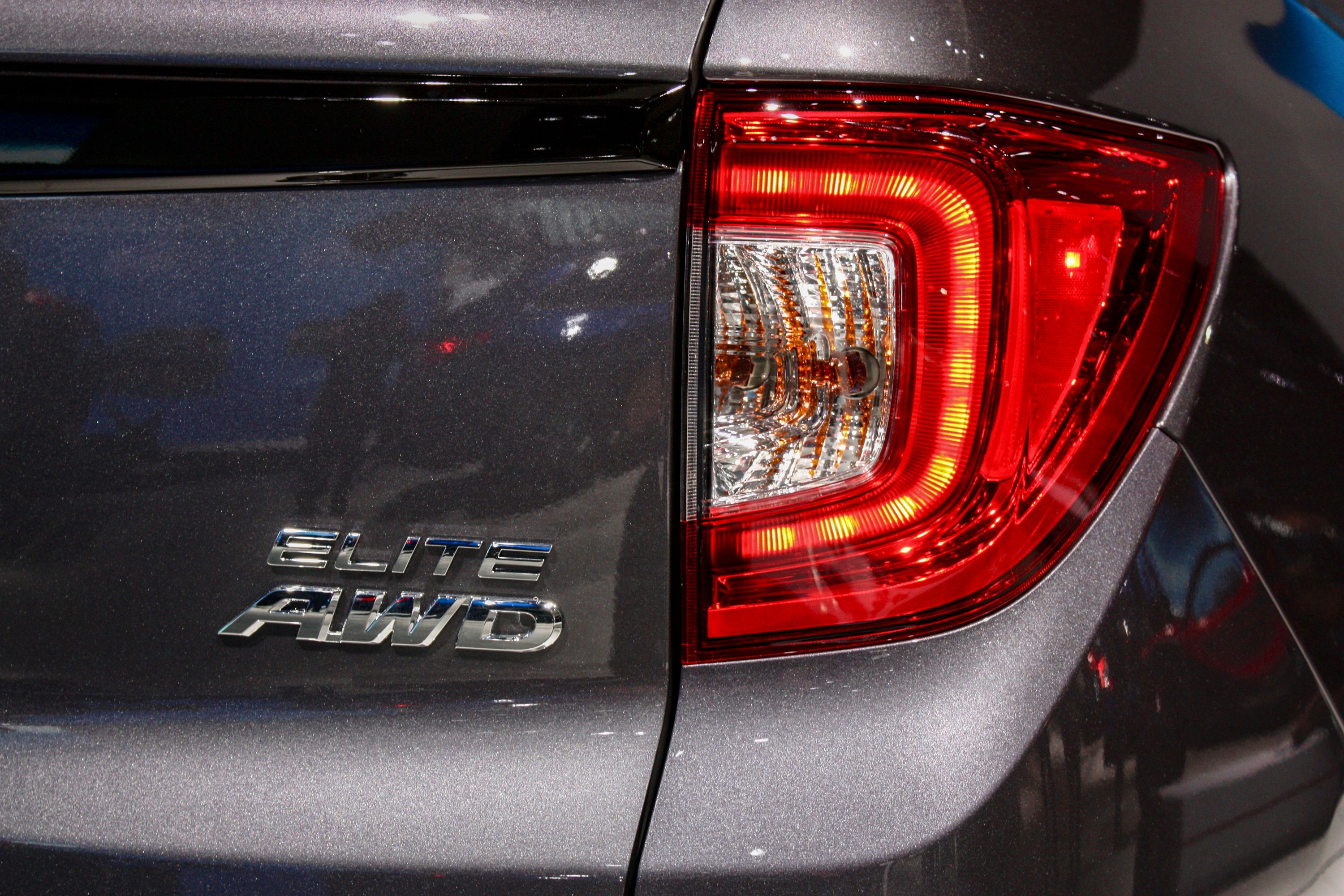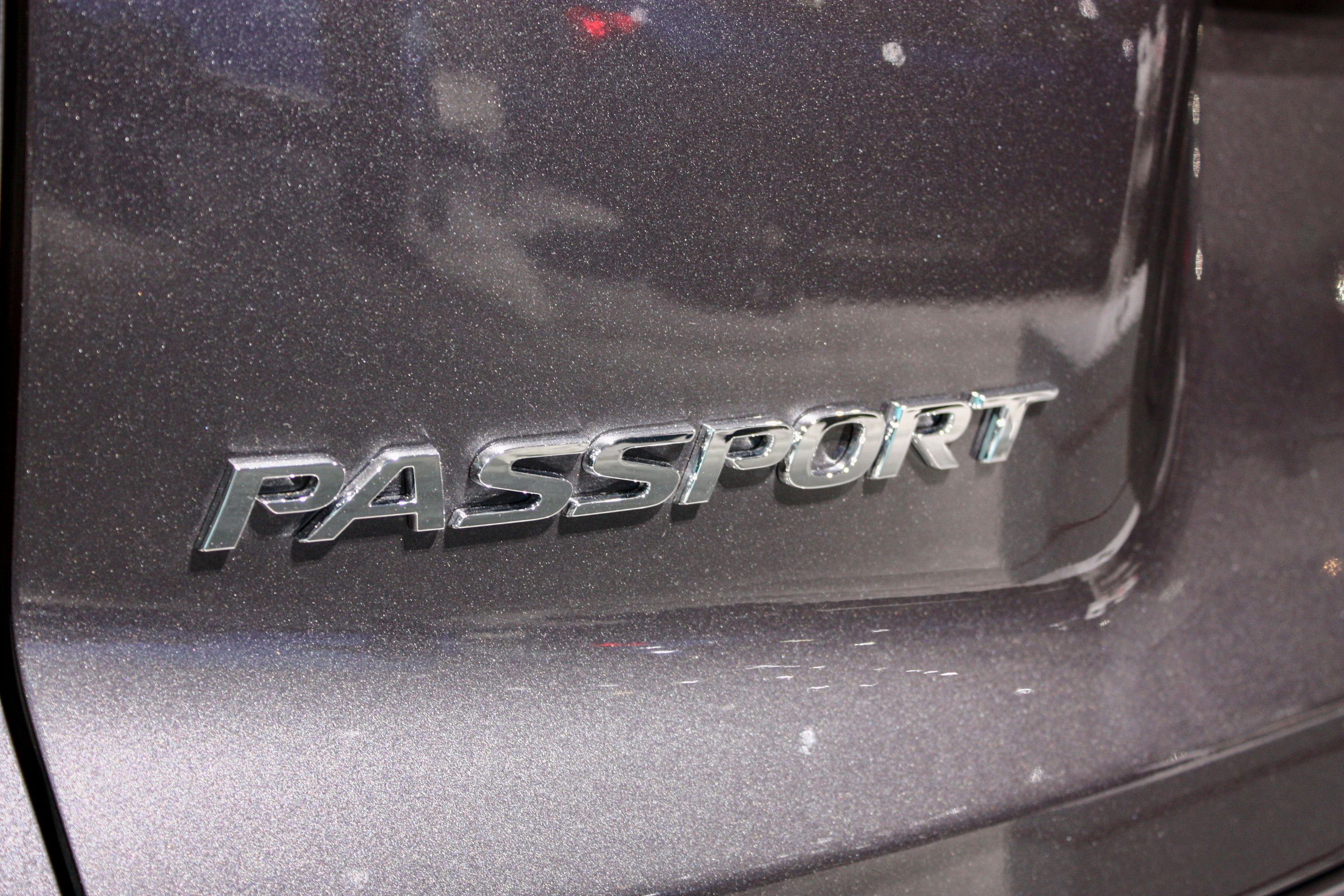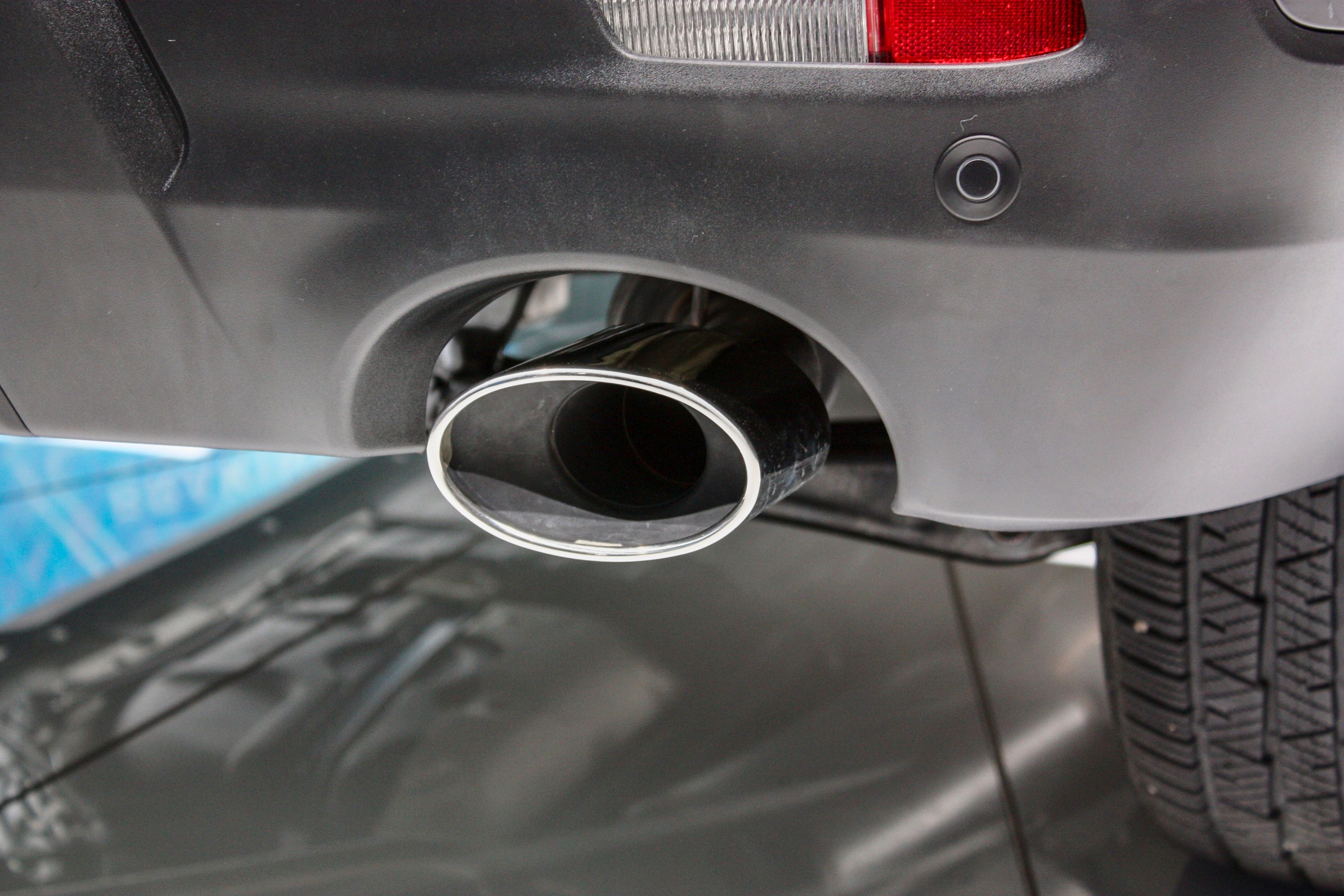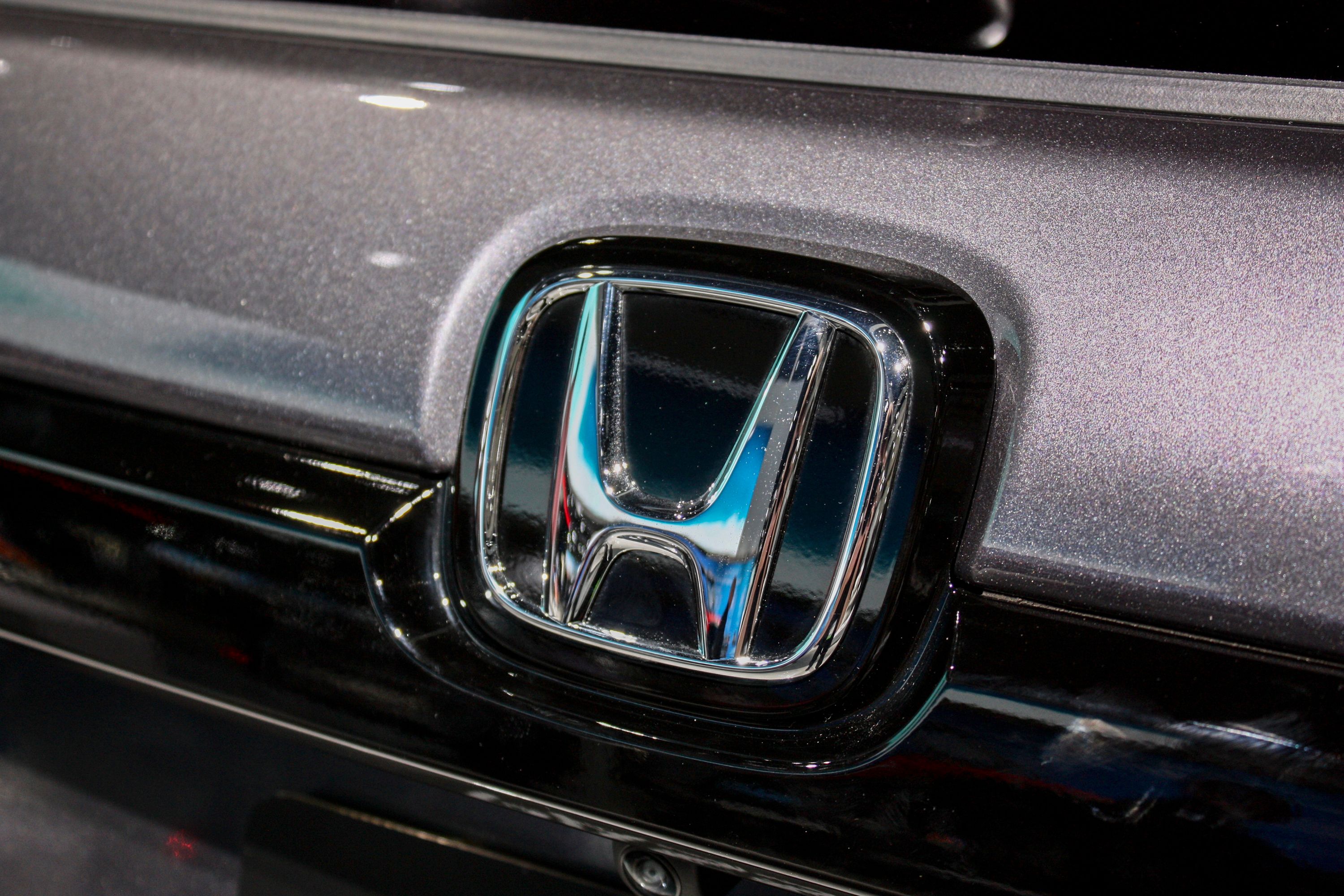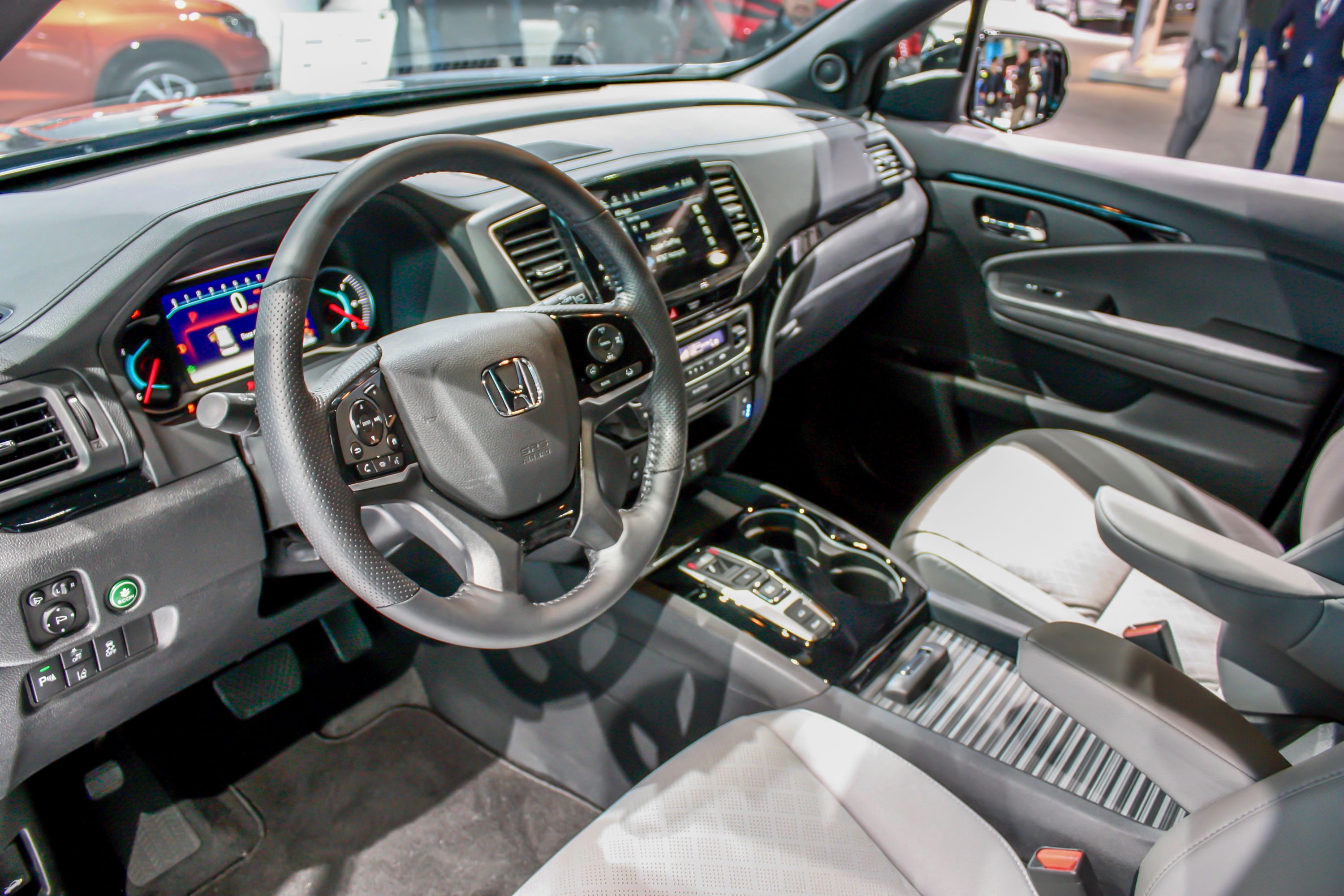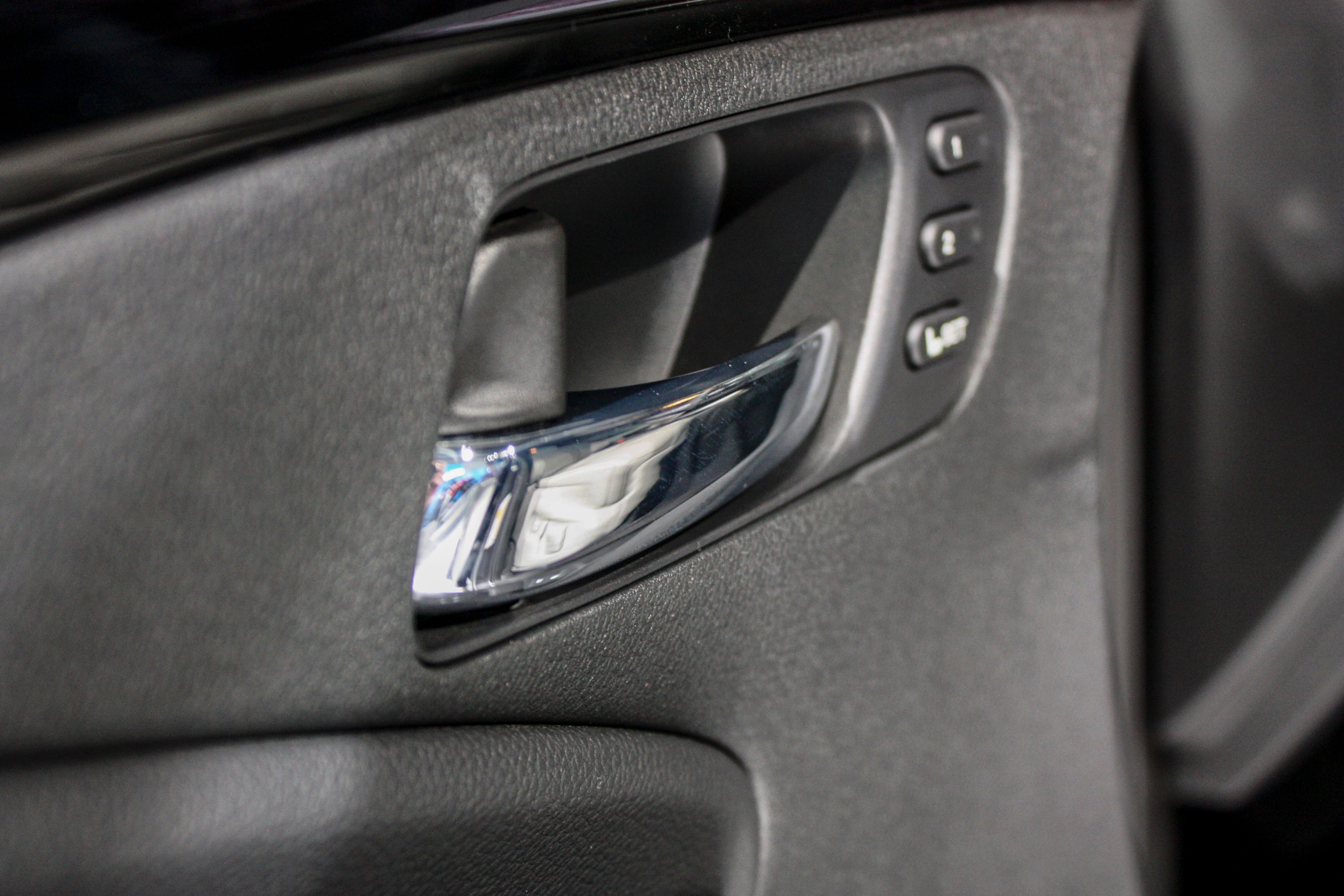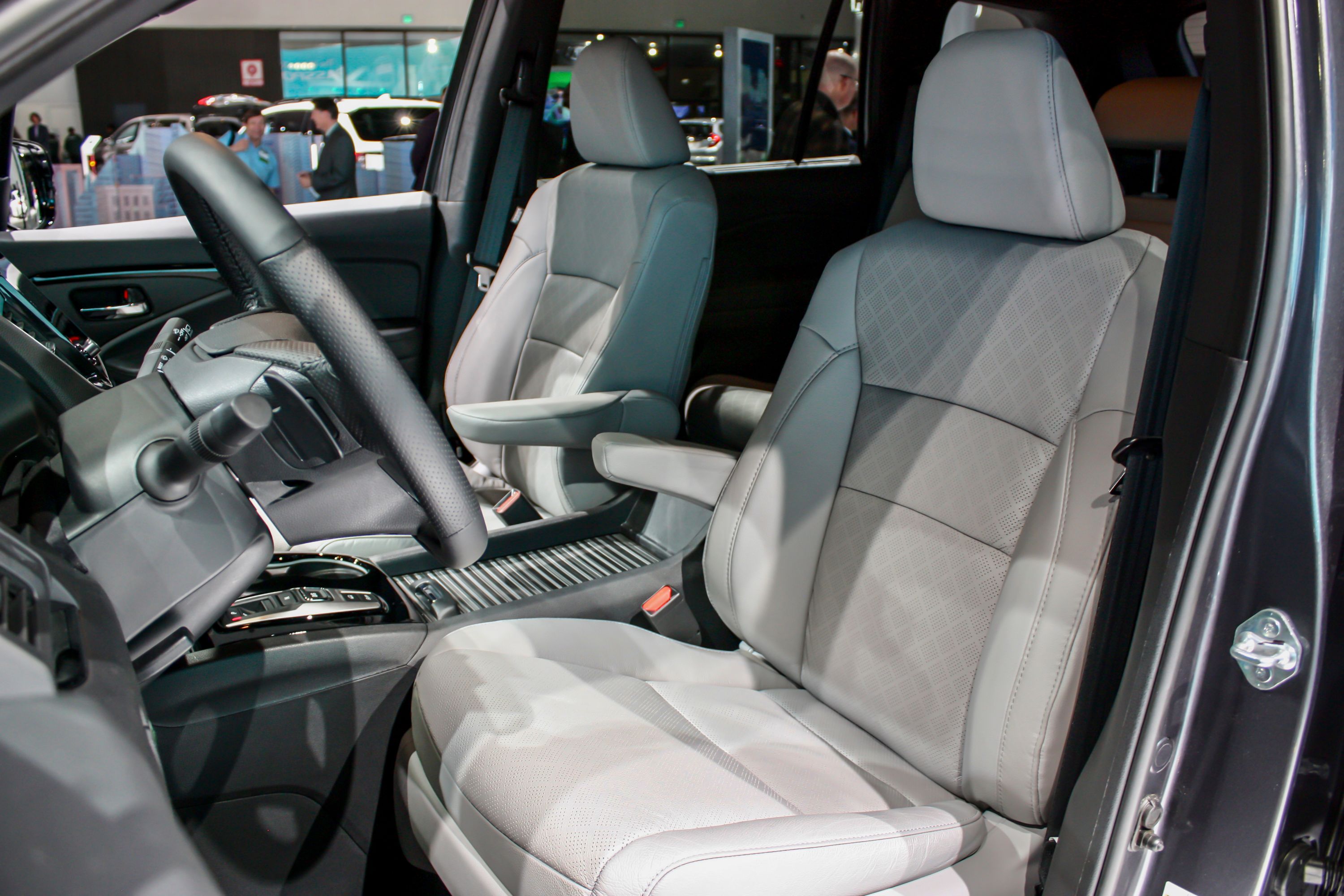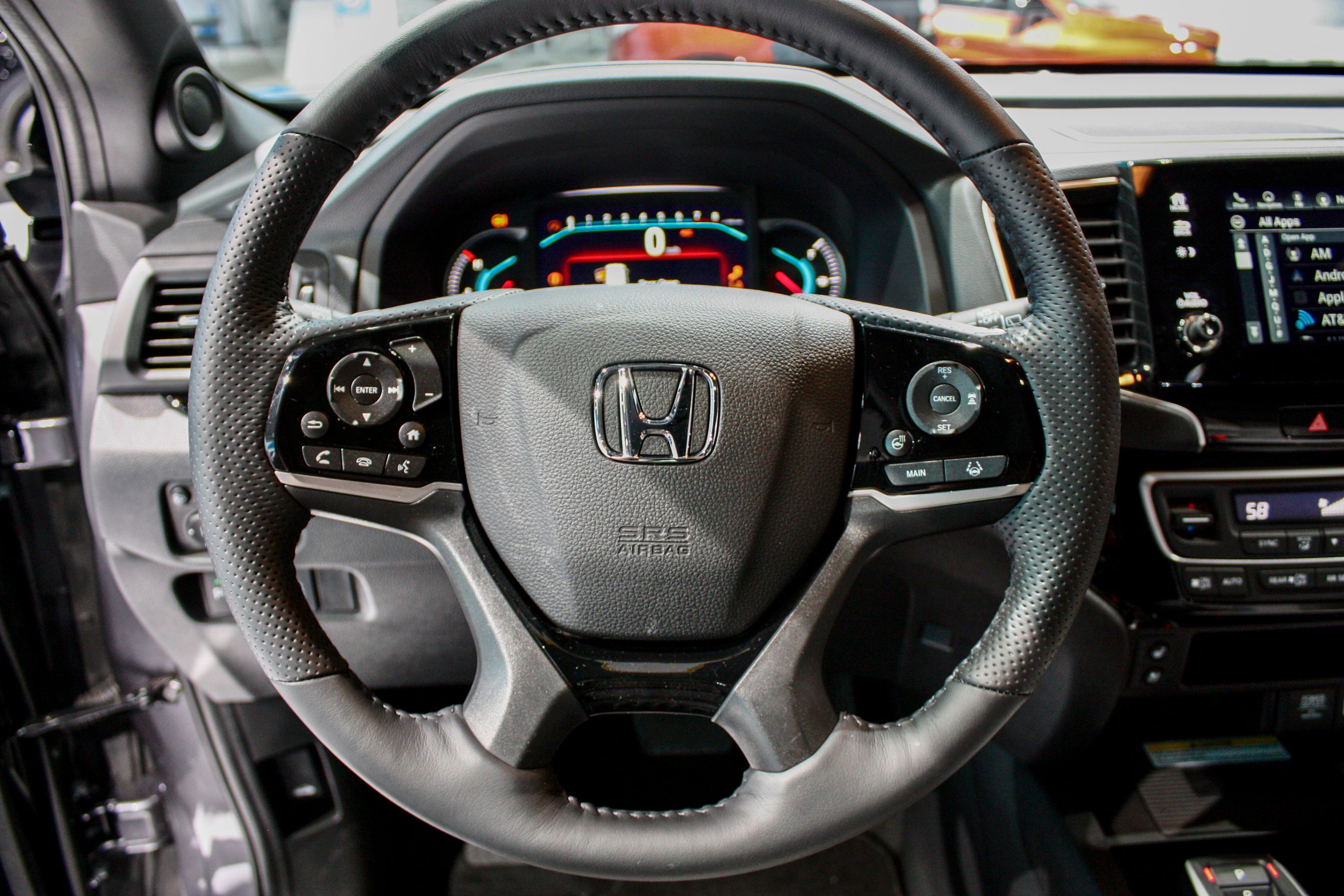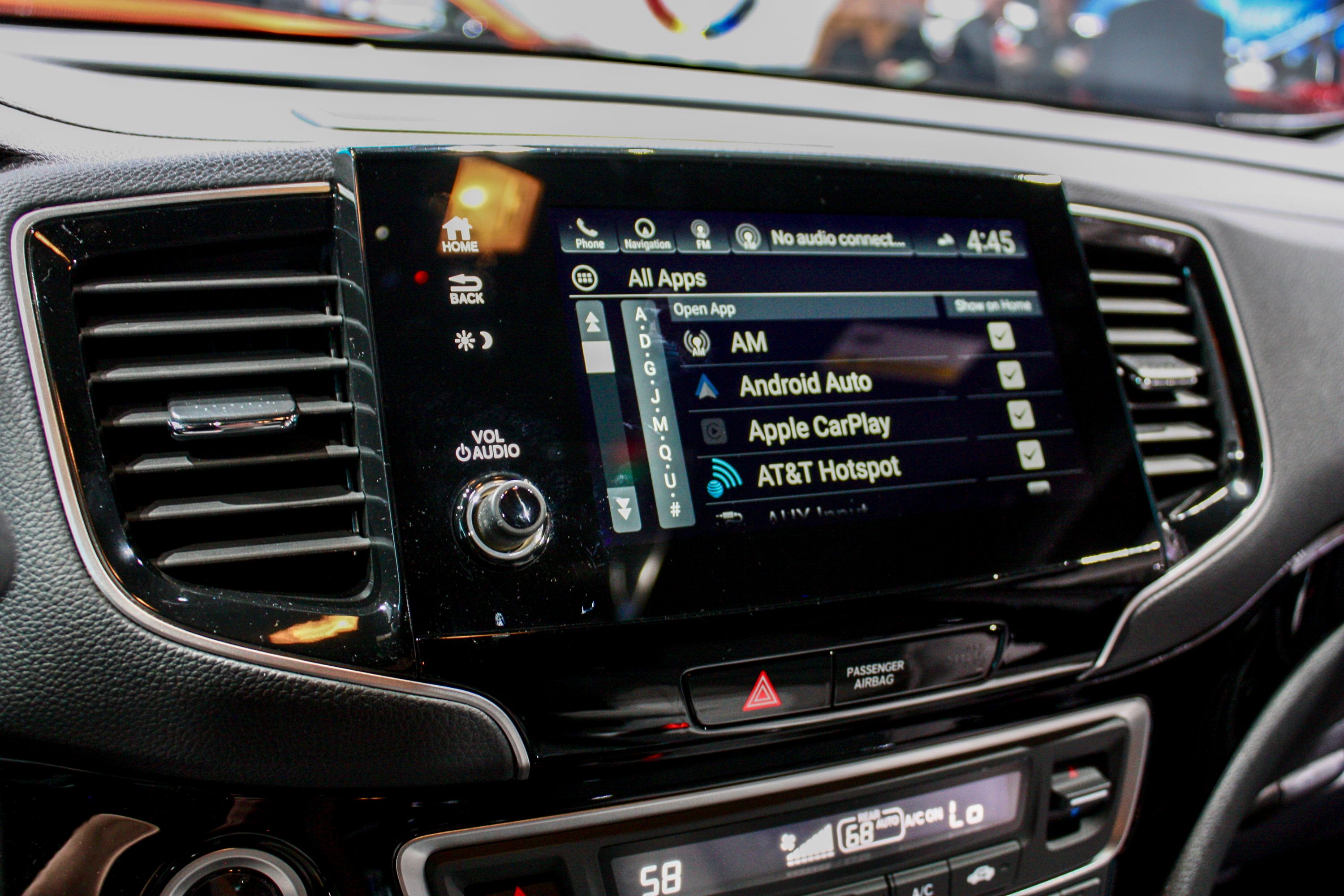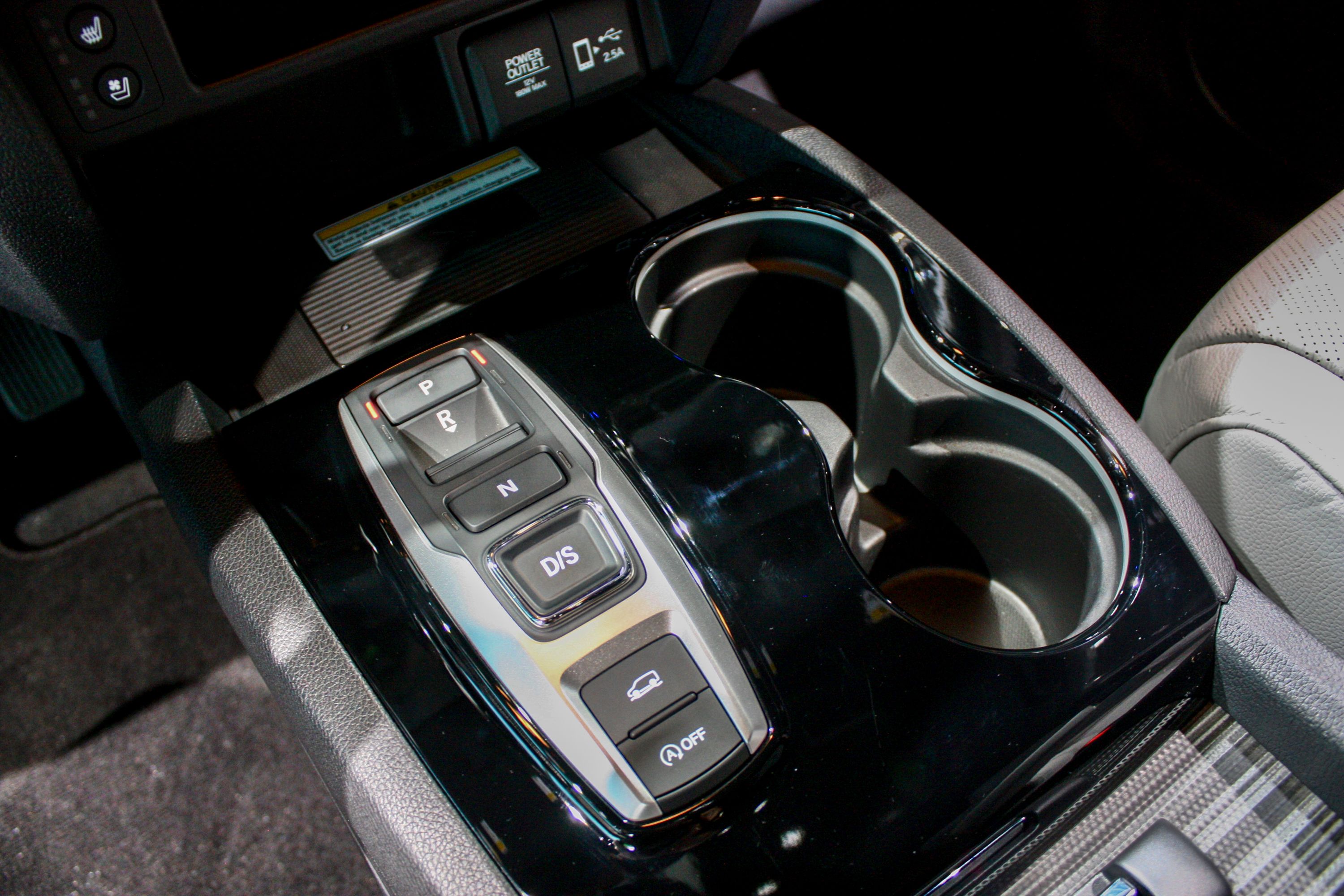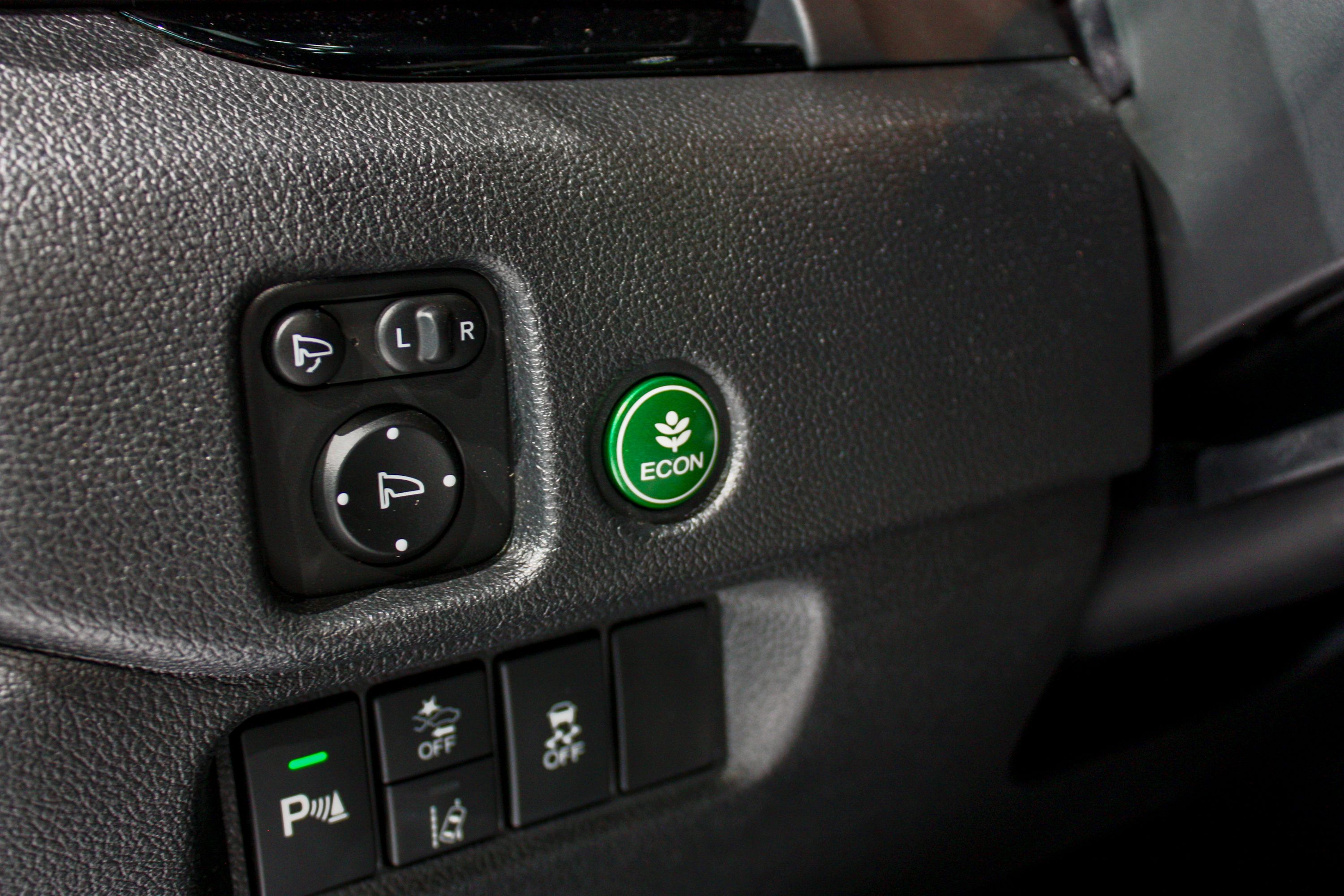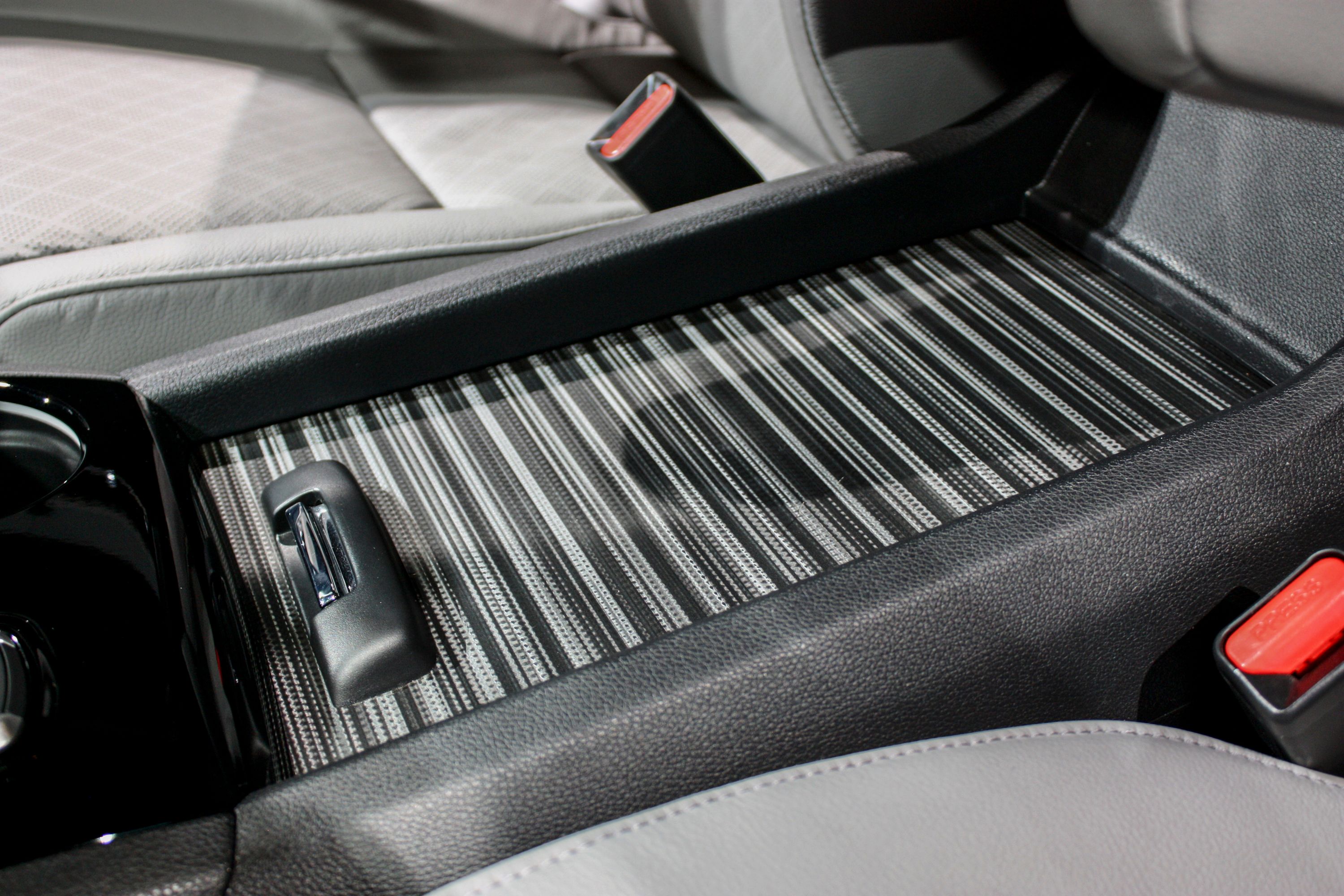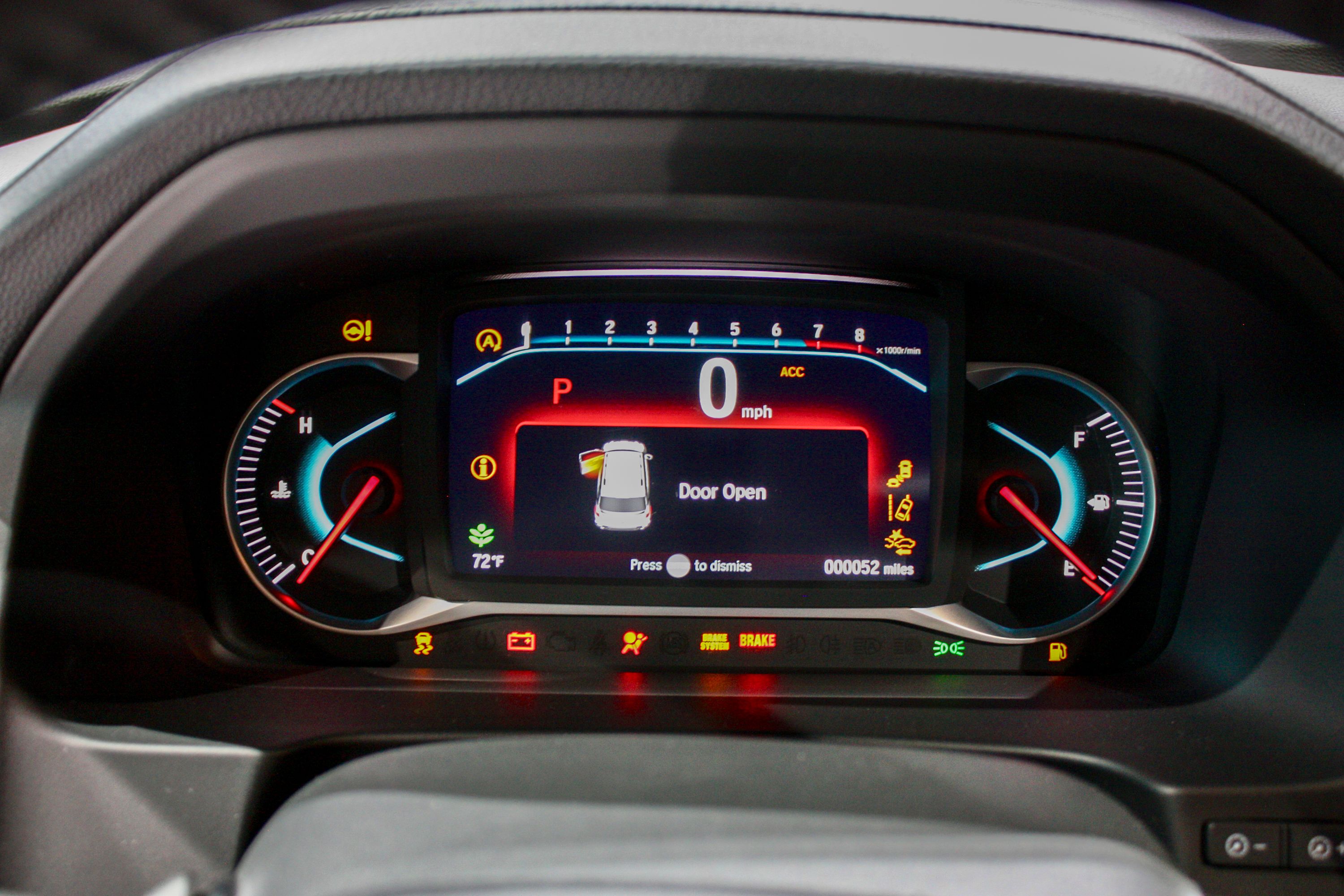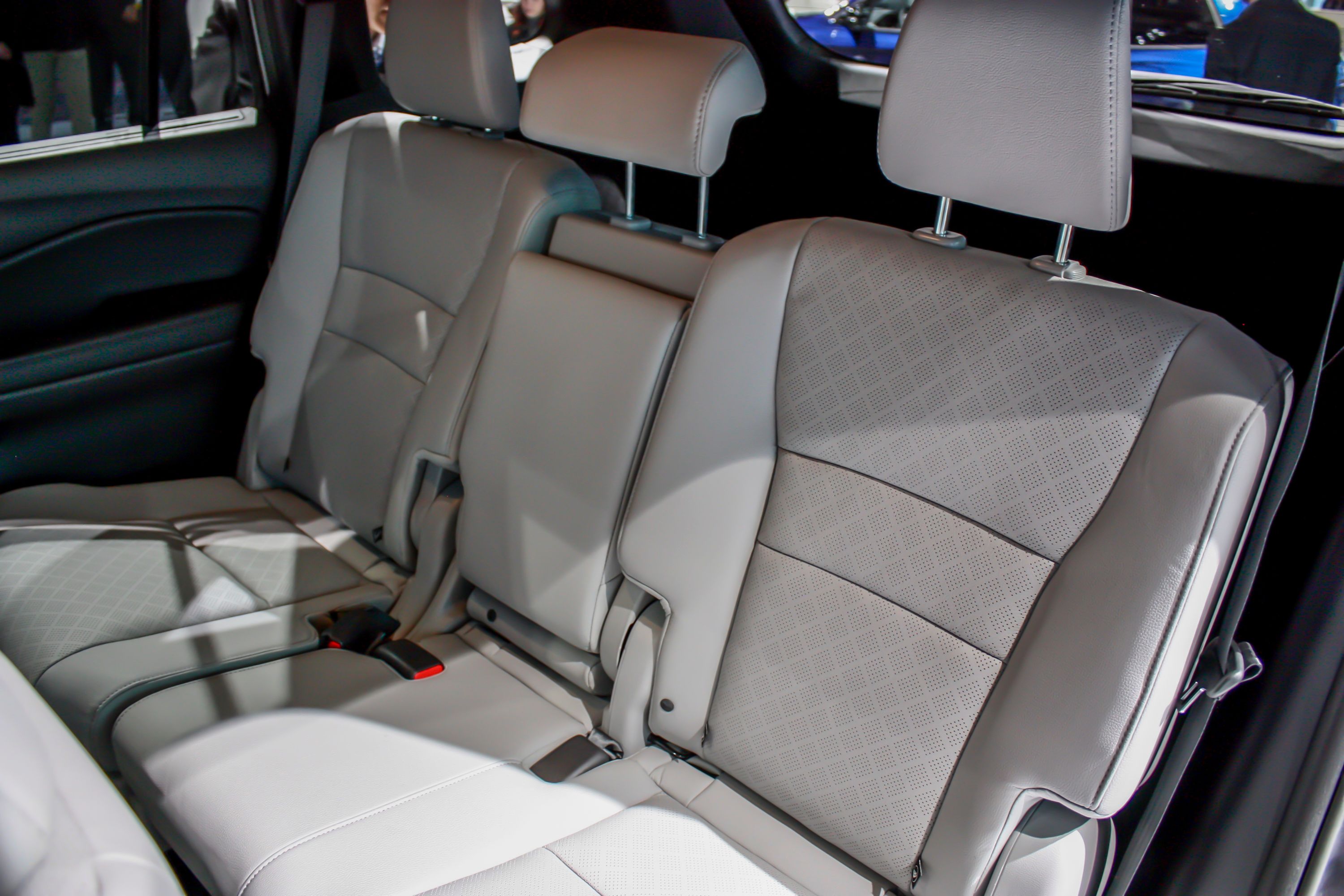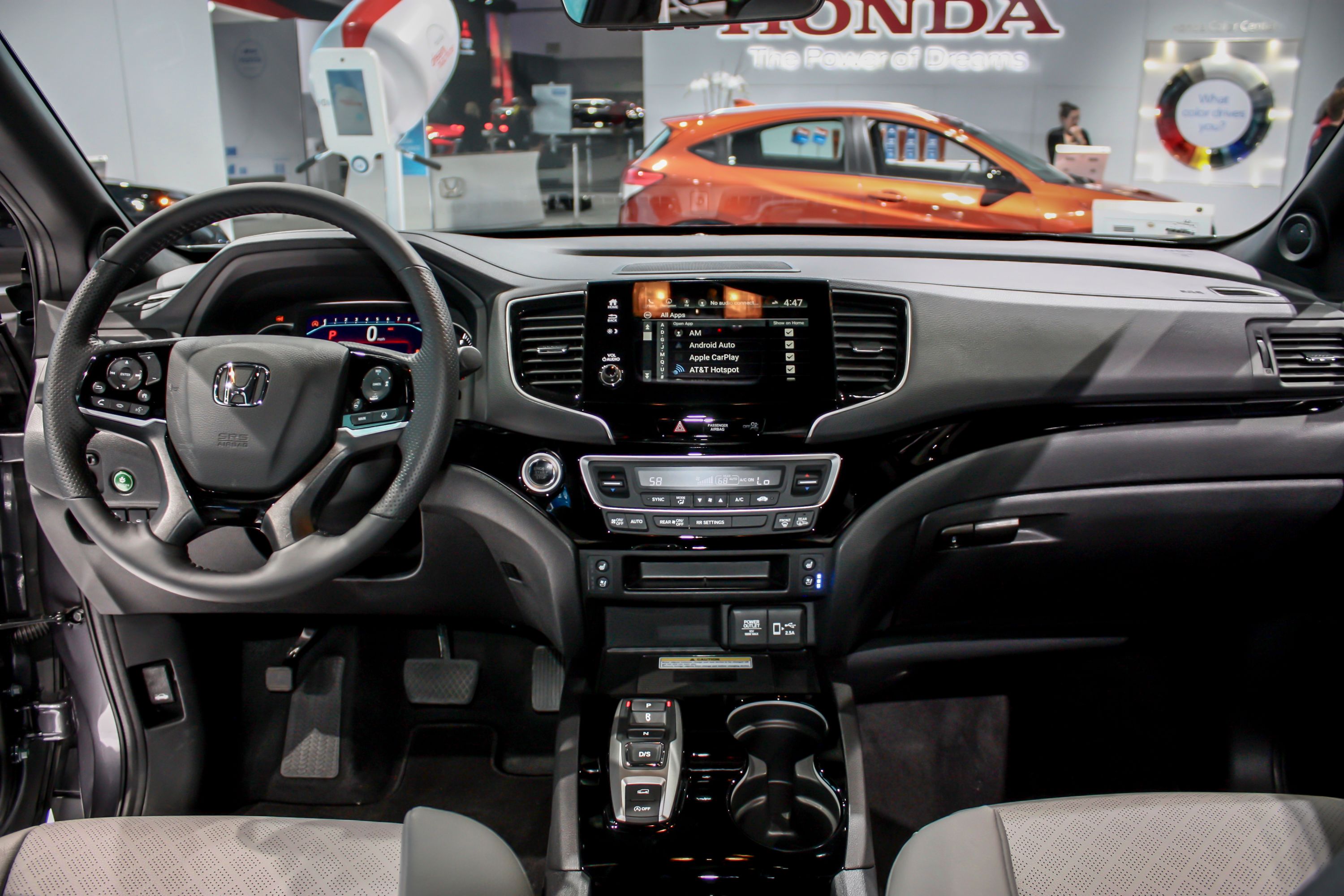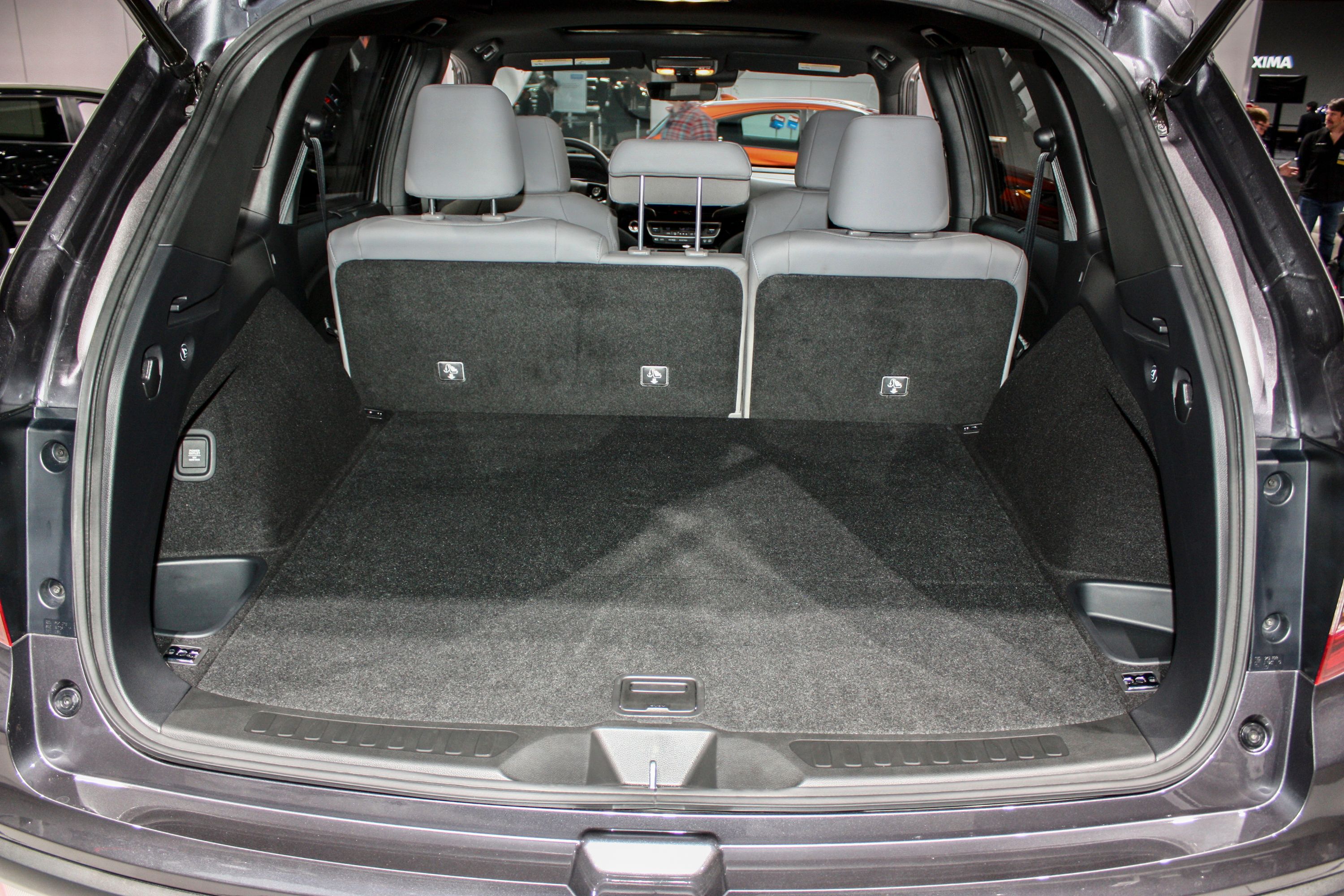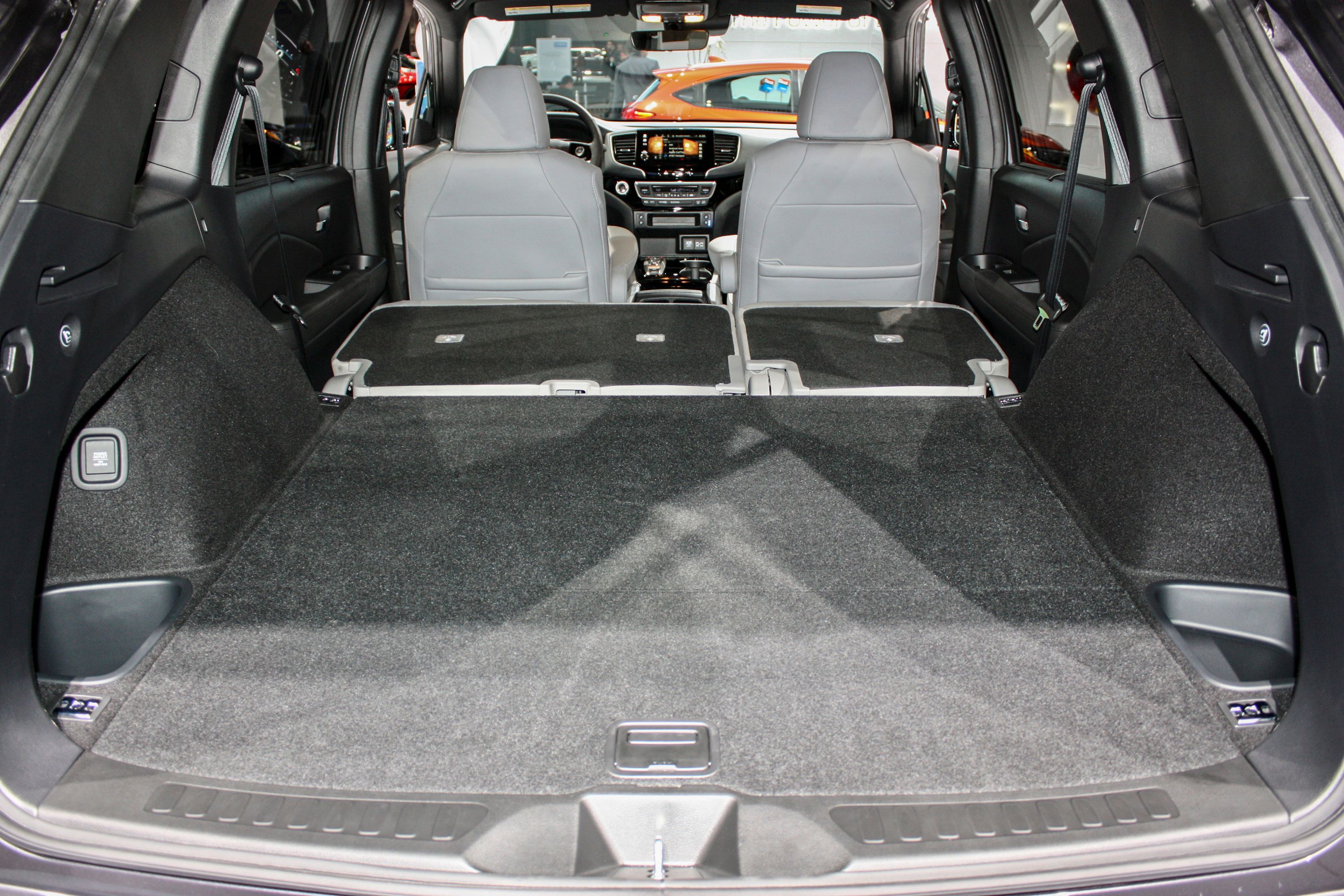Discontinued in 2002, the Honda Passport made a comeback for the 2019 model year. Introduced at the 2018 Los Angeles Auto Show, the modern Passport fills the gap between the CR-V and the Pilot.
Based on Honda's Global Light Truck platform, the SUV shares many of its underpinnings and drivetrain components with the three-row Pilot and Ridgeline pickup trucks. It has a similar unibody construction, but it's presented as a more rugged, off-road capable crossover. More importantly, it's Honda's very own design and not a rebadge Isuzu, like the old Passport. Unlike other Honda SUVs, it also benefits from a range of accessories, much like Mopar is offering for FCA vehicles. Let's find out more about it in the review below.
2019 Honda Passport
- Make: Array
- Model: 2019 Honda Passport
- [do not use] Vehicle Model: Array
2019 Honda Passport Exterior
While it bears no resemblance to the smaller Honda SUVs, the Passport borrows many cues from the bigger Pilot. Sure, it stands on its own once you factor in all the little details, but there are plenty of similarities to talk about.
Up front, for instance, the headlamps look a lot like the Pilot's in terms of shape and size. Granted, the design of the LED bars inside is different, but the small turn signals mounted toward the sides are taken from its bigger sibling.
This, coupled with the shorter overall length and shortened rear overhang, make the Passport a better crawler, as it improves approach, departure and breakover angles.
Around back, Honda retained many of the Pilot's essential features. First up, the Passport features the same triangular headlamps on each side of the tailgate. The big difference here though is that Honda deleted the Pilot's inner lights. This is a bit unusual as most crossovers now feature two-piece taillights, but it's nice to see something different. The Passport also retains the trapezoidal license plate recess on the tailgate and a similar design of the bumper.
On the other hand, Honda added a diffuser-like element below and a bigger spoiler on the tailgate. The black trim that runs across the entire width of the tailgate adds a bit of class, as do the chrome exhaust pipes at the corners.
All told, the Passport looks a bit mundane, but it does benefit from a more rugged look compared to the Pilot. It's not as sophisticated as other Honda models, but it's modern enough for 2019.
2019 Honda Passport exterior dimensions
|
Wheelbase |
111.0 in. |
|
Length |
190.5 in. |
|
Height |
71.6 in. |
|
Width |
78.6 in. |
|
Track Front/Rear, 2WD (AWD) |
67.0/67.0 in. (66.7/66.7 in.) |
|
Ground Clearance, 2WD (AWD) |
7.8 in. (8.4 in.) |
|
Approach/Departure Angles, Degrees, 2WD (AWD) |
20.6/26.8 (21.4/27.6) |
2019 Honda Passport Interior
If you were expecting to find a unique cabin layout in the Passport, you'll be disappointed. Honda borrowed more than 90 percent of the Pilot's interior for this crossover.
At first glance, the door panels are identical as well, but the four-spoke steering wheel was redesigned and now include new controls mounted in gloss-black inserts.
The range-topping Touring and Elite models also feature 4G LTE wi-fi for up to seven devices with a free 90-day/3GB trial period.
Like any new Honda, the Passport comes with a seven-inch digital instrument cluster that displays detailed trip computer data, audio system information, and phone information. You can navigate through the options using the controls on the steering wheel.
For added convenience, Honda included a multi-view rear-view camera as standard. Thanks to its overhead view option, it makes connecting the SUV to a trailer a lot easier.
In the trunk, there's 41.2 cubic feet of luggage room when the second-row seats are up. Fold them down and usable space increases to 77.9 cubic feet, enough to accommodate mountain bikes and camping gear.
2019 Honda Passport interior dimensions
|
Cargo Volume (Behind 2nd Row) SAE J1100 |
41.2 cu.-ft. |
|
Cargo Volume (Behind 1st Row) SAE J1100 |
77.9 cu.-ft. |
|
Cargo Volume (Behind 1st Row) SAE J1100 plus floor space between seating rows and seats in their forward-most and upright position. |
100.7 cu.-ft. |
|
Passenger Volume |
115.9 (114.9 w/sunroof) |
2019 Honda Passport Drivetrain
Since it rides on the same platform as the Pilot, it's not surprising that the two SUVs also share the same engine.
The V-6 mates to Honda's latest nine-speed automatic transmission, also offered in the Pilot and other vehicles. The SUV has a two-wheel drive layout as standard, but you can opt for the i-VTM4 AWD system. Unlike most all-wheel-drive systems, it uses active vectoring to send up to 70 percent of torque to the rear axle and up to 100 percent of that to either the left or right wheels. This setup improves handling in wet or snowy terrain, and even when tackling sandy trails.
The Intelligent Traction Management (ITM) system is standard on both the front-wheel drive and all-wheel drive Passport models, further enhancing grip in all driving conditions.
When it comes to towing, the Passport is just as capable as the Pilot.
2019 Honda Passport specifications
|
Engine Type |
V-6 |
|
Displacement |
3471cc |
|
Horsepower (SAE Net) |
280 @6 000 rpm |
|
Torque (SAE Net) |
262 lb-ft @ 4700 rpm |
|
Fuel Injection |
Direct |
|
Transmission |
9-speed automatic (9AT) |
|
Towing Capacity, 2WD (AWD) |
3,500 lbs (5,000 lbs) with tow package |
2019 Honda Passport Safety
The familiar Honda Sensing suite of safety features is standard on the Passport, regardless of trim. The package includes Collision Mitigation Braking System with Forward Collision Warning, Road Departure Mitigation with Lane Departure Warning, Lane Keeping Assistance System, and Adaptive Cruise Control.
Honda didn't have much to say about other passive or active features, but said it targets an Euro NCAP 5-Star Overall Vehicle Score safety rating and an IIHS Top Safety Pick rating. Given that all 2019 model-year Honda vehicles achieved an NCAP 5-star Overall Vehicle Score safety rating, it's safe to assume that the Passport will follow suite.
2019 Honda Passport Pricing
The Passport will be offered in four trims: the base Sport, a better appointed EX-L, the high-tech Touring, and the range-topping Elite. All models except the Elite can be configured with two- or all-wheel drive. All trims also feature 20-inch alloy wheels and tires, the Honda Sensing package, LED lights, Smart Start and Smart Entry, and three-zone automatic climate control.
Pricing information is not yet available, but since it will be positioned between the CR-V and the Pilot, the Passport should bridge the gap between the two crossover pricing-wise. The CR-V starts from $24,350 and the Pilot from $31,450, so the Passport should retail from anywhere between $27,000 to $29,000.
2019 Honda Passport Competition
Subaru Forester
As an inbetweener, the Honda Passport will find its way on cross-shopping lists with both compact and the midsize crossovers that are fun to drive off the beaten path. The Subaru Forester is one of them. Luckily, Subaru just replaced its dated crossover with a fifth-generation model for the 2019 model year. Although it remains familiar, it sports a fresh design, and it grew a bit larger, so it might turn out to be the perfect competitor for the upcoming Passport. It's equipped with all the modern tech you need, and it has a spacious trunk, plus all sorts of premium-like optional features. Power comes from a 2.5-liter boxer engine rated at 182 horsepower and 176 pound-feet of torque. This might be the Forester's only problem as there's no V-6 option, but Subaru's iconic Symmetrical AWD system makes it a fun SUV when you leave the tarmac. It's not very expensive either, starting from $24,295.
Read our full review of the 2019 Subaru Forester.
Nissan Murano
Well, the Murano is actually a midsize SUV, and it's should be a bit bigger than the Passport, but its sleek design makes it look a bit more compact than it really is. The Murano is a bit older though, having been launched for the 2015 model year. Praised for its sharp exterior style, the Murano is also a solid vehicle when it comes to equipment, offering navigation and a big touchscreen in ever trim. On the other hand, if you're looking for premium features, you won't get too many. For instance, there's no wood trim, an option the Passport might have. The good news is that the Murano comes with a powerful 3.5-liter V-6. The mill cranks out 260 horsepower and 240 pound-feet of torque and sends it to the wheels through an Xtronic CVT transmission. Needless to stay, it has a better shot against the Passport than the Subaru Forester. It's a bit more expensive though, coming in at $31,000 before options.
Read our full story on the 2018 Nissan Murano.
Final Thoughts
With more than half of the Hondas sold in the U.S. in 2018 being SUVs, it’s no surprise that the Japanese automaker added yet another hauler in its lineup. Sure, it’s a bit strange that Honda chose to squeeze a vehicle between the CR-V and the Pilot instead of making a full-size SUV, but the Passport's off-road-oriented nature sets will prevent cannibalization with the Pilot. Historically, the Passport doesn’t have a very solid name, as the previous generation was plagued with serious issues. In 2010, eight years after the Passport went out of production, the NHTSA issued a recall for almost 150,000 units due to severe corrosion issues to the frame. Hopefully, the new-generation Passport will be more reliable.
Further reading
Read our full review on the 1994 - 2002 Honda Passport.
Read our full review on the 2017 Honda CR-V.
Read our full review on the 2017 Honda Pilot.





